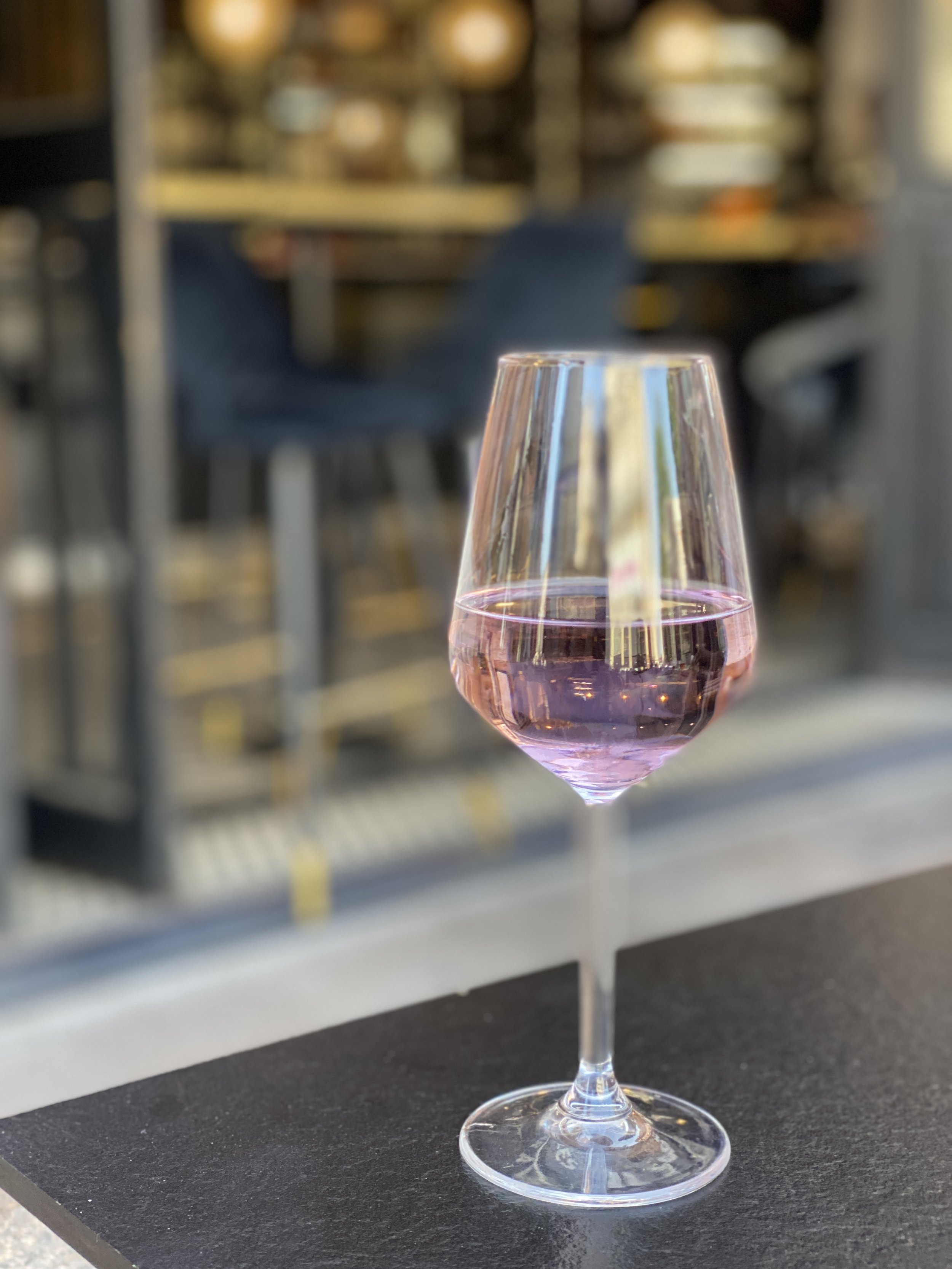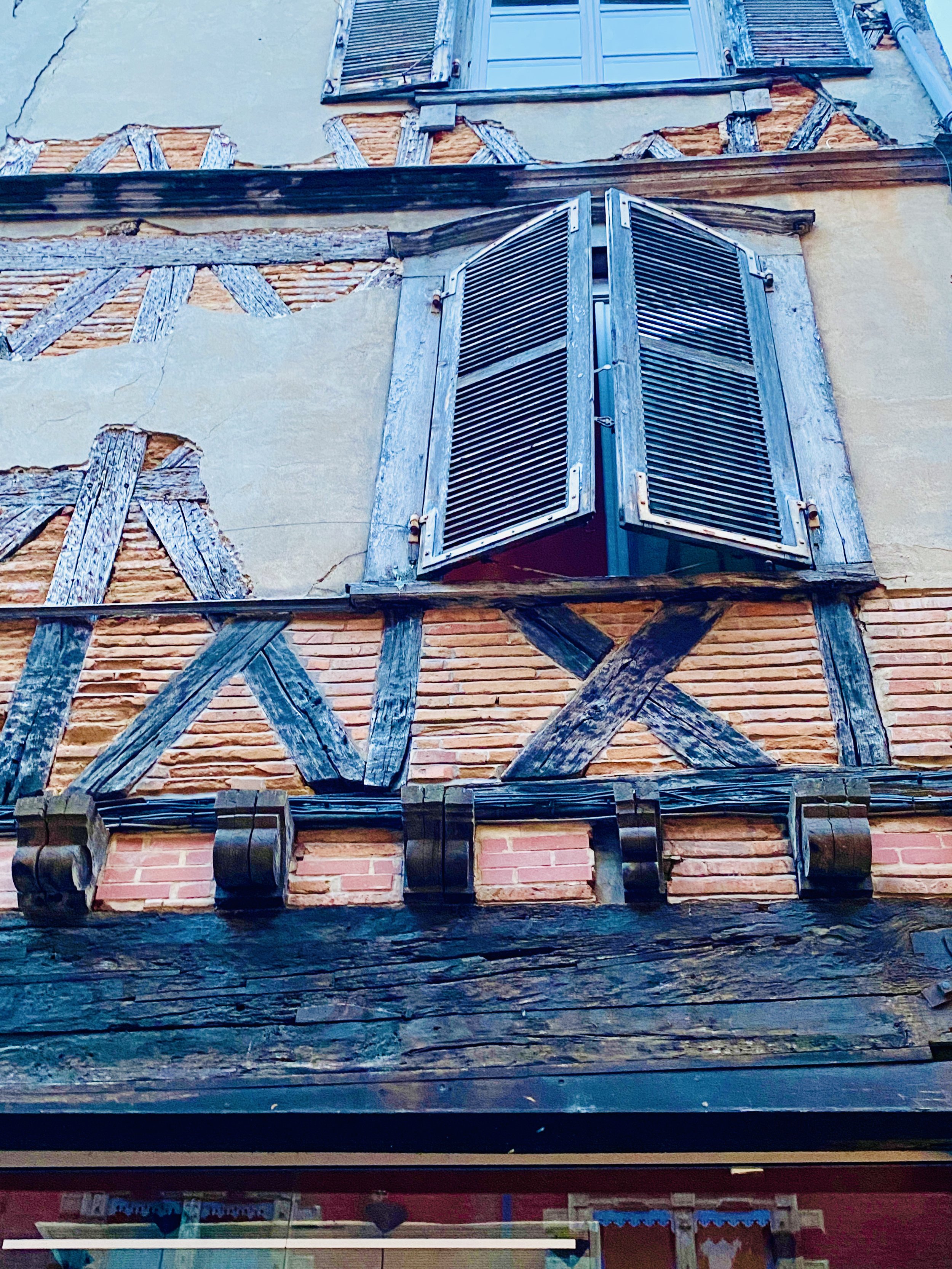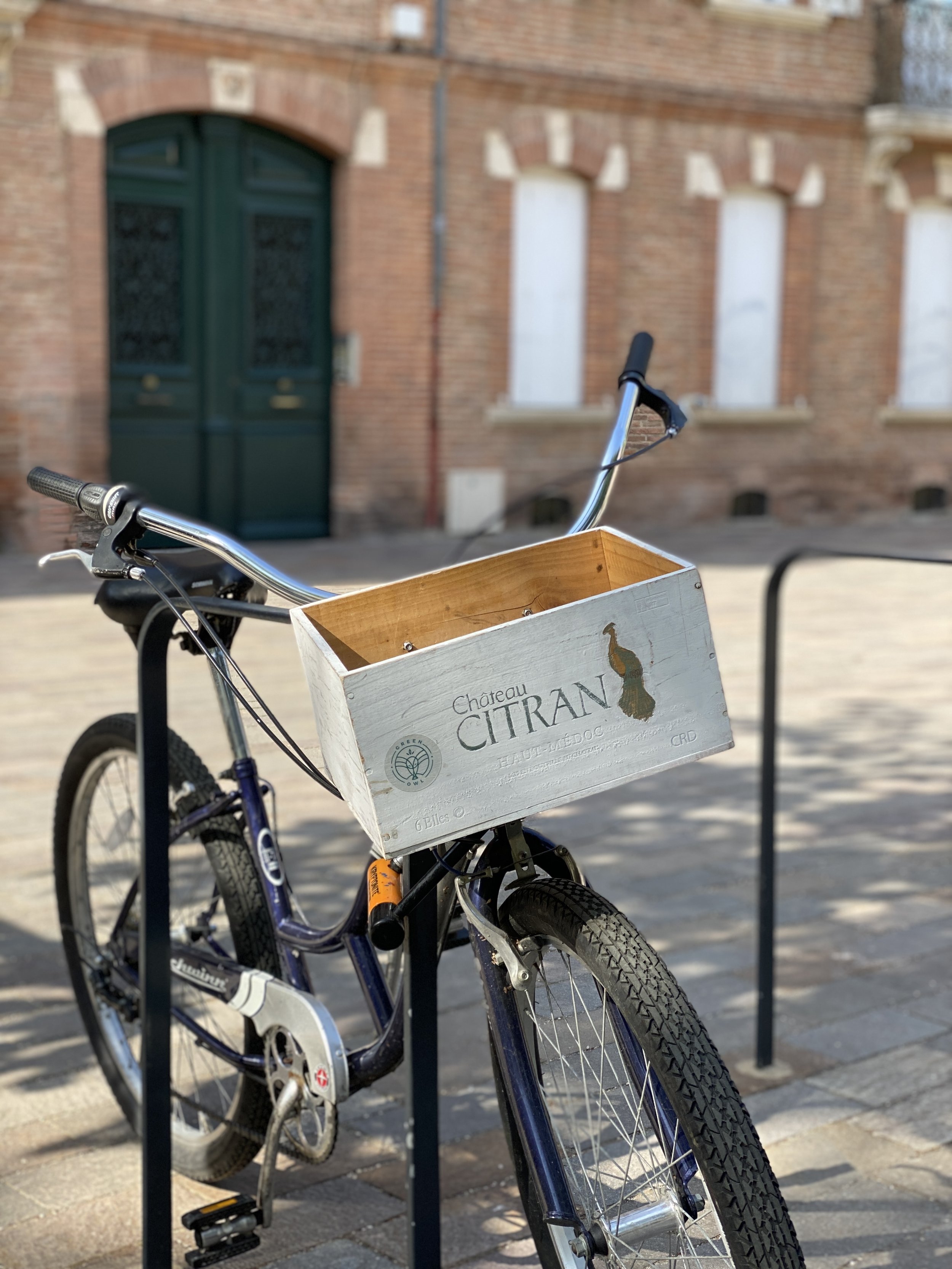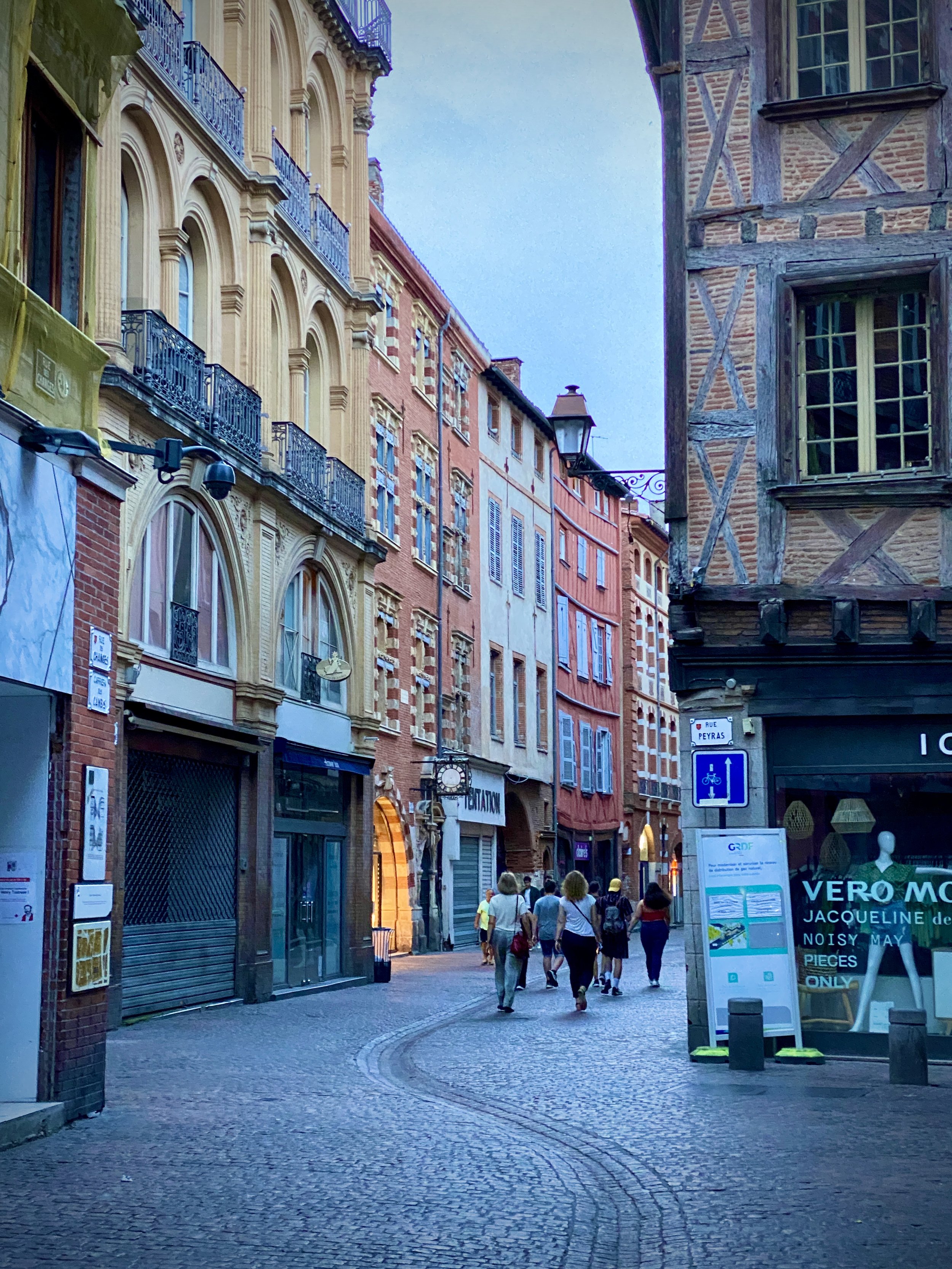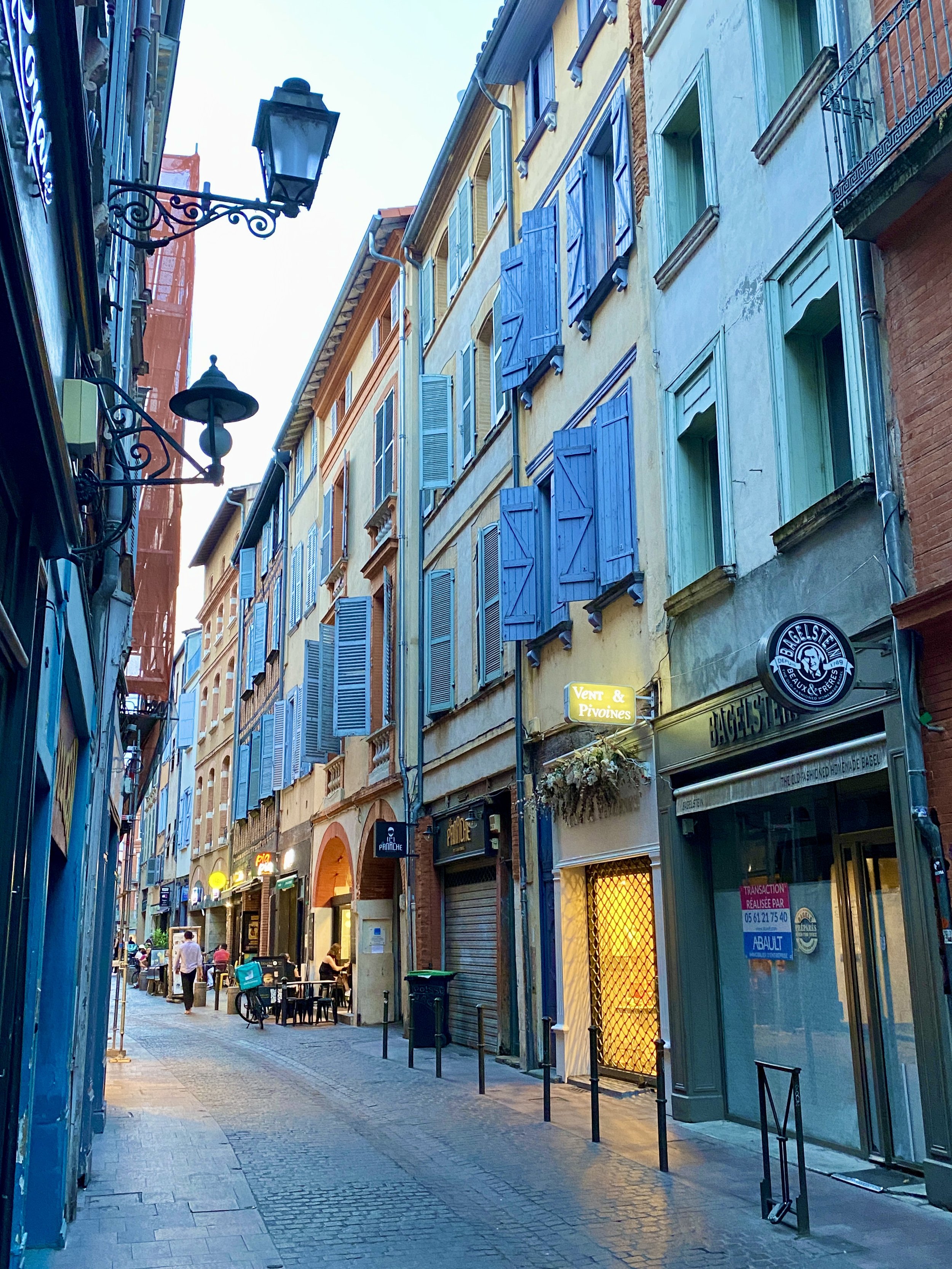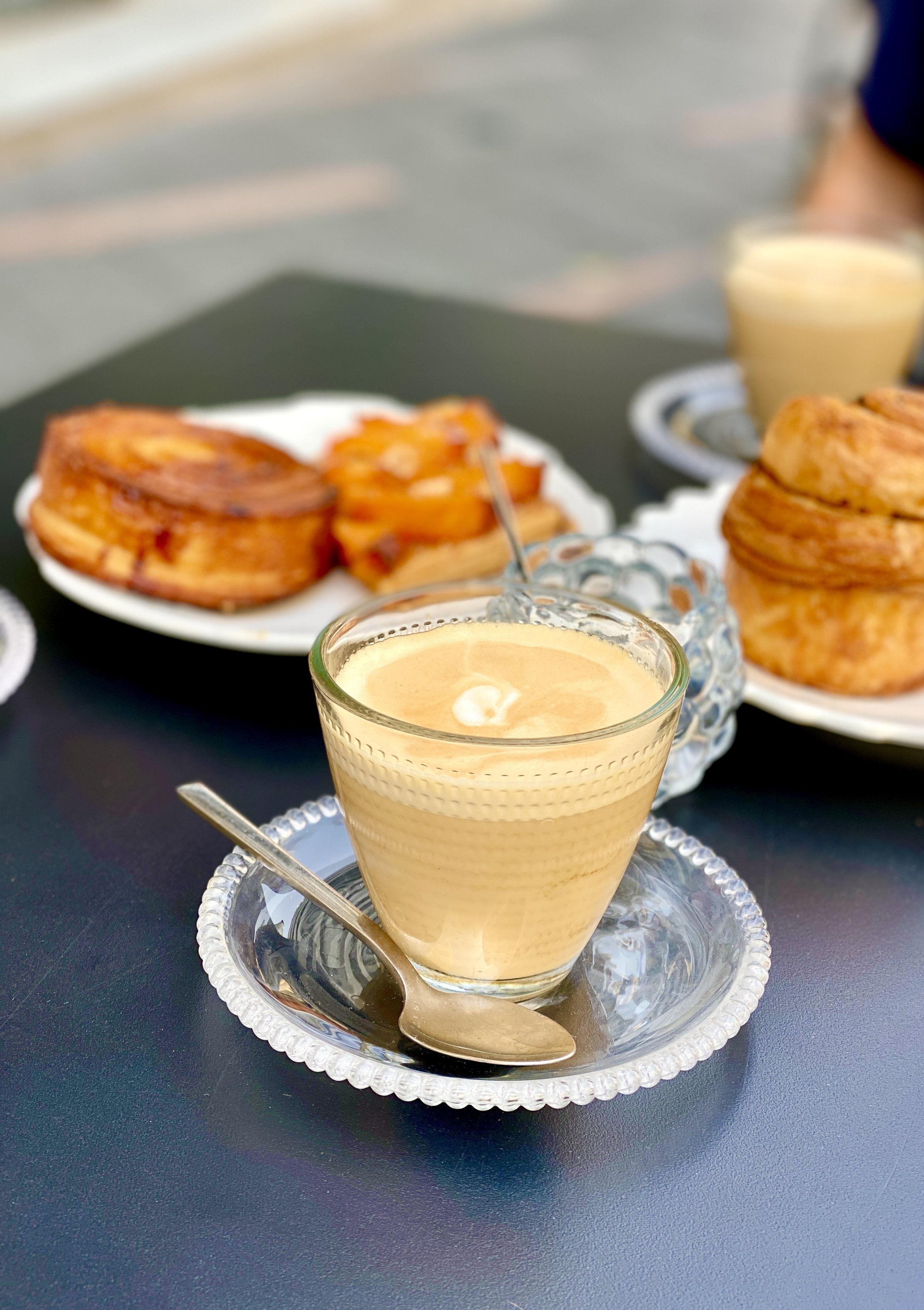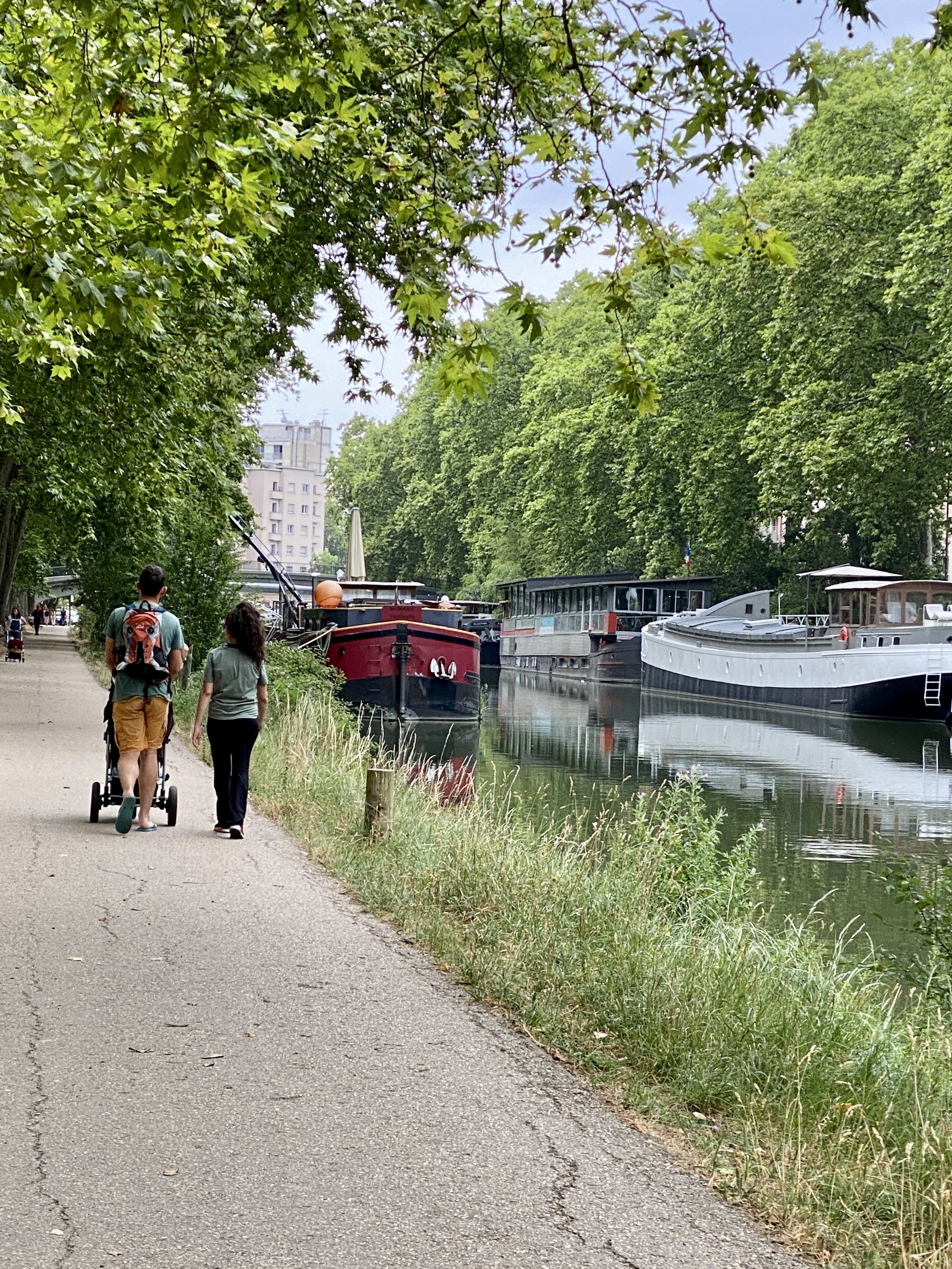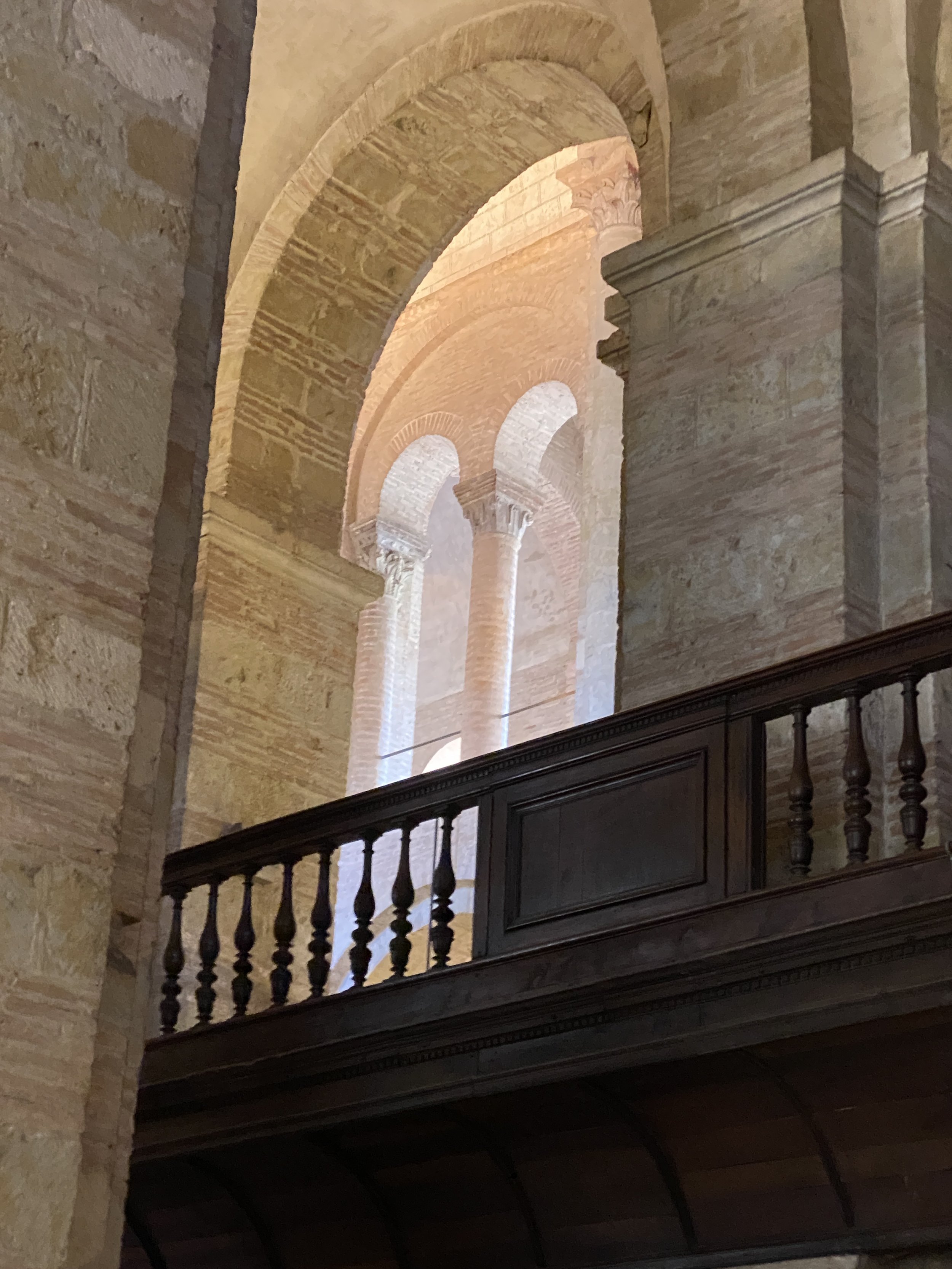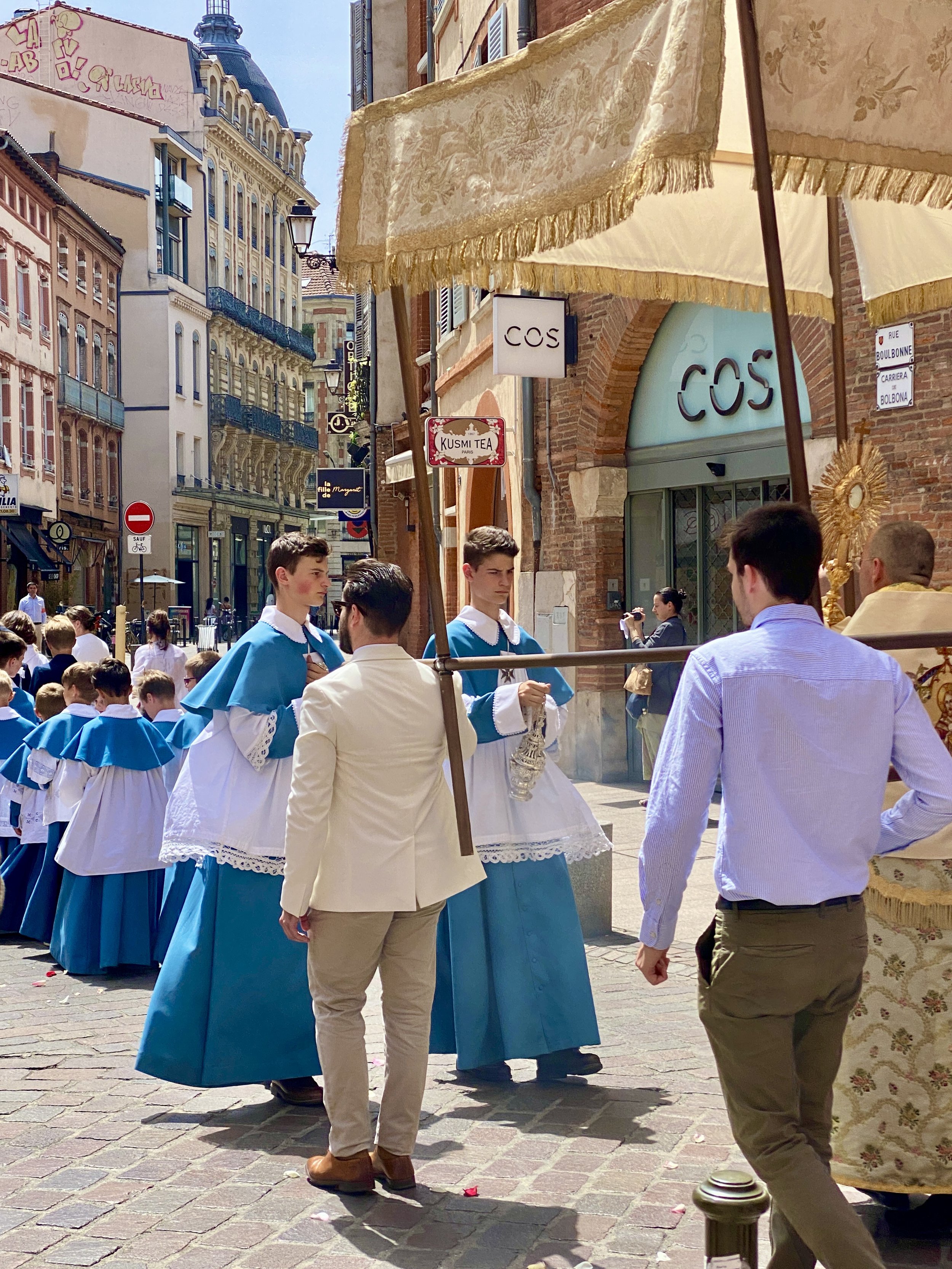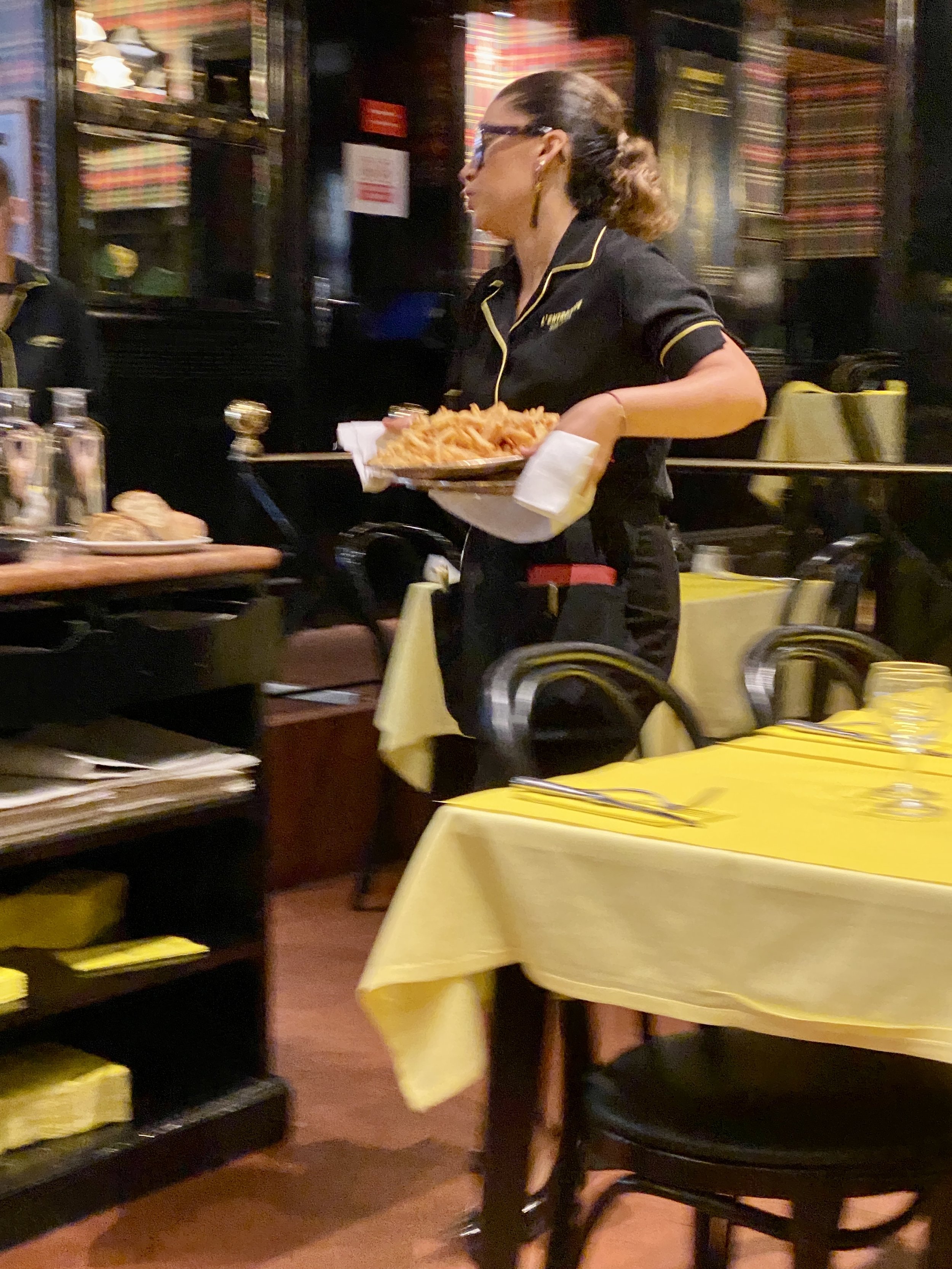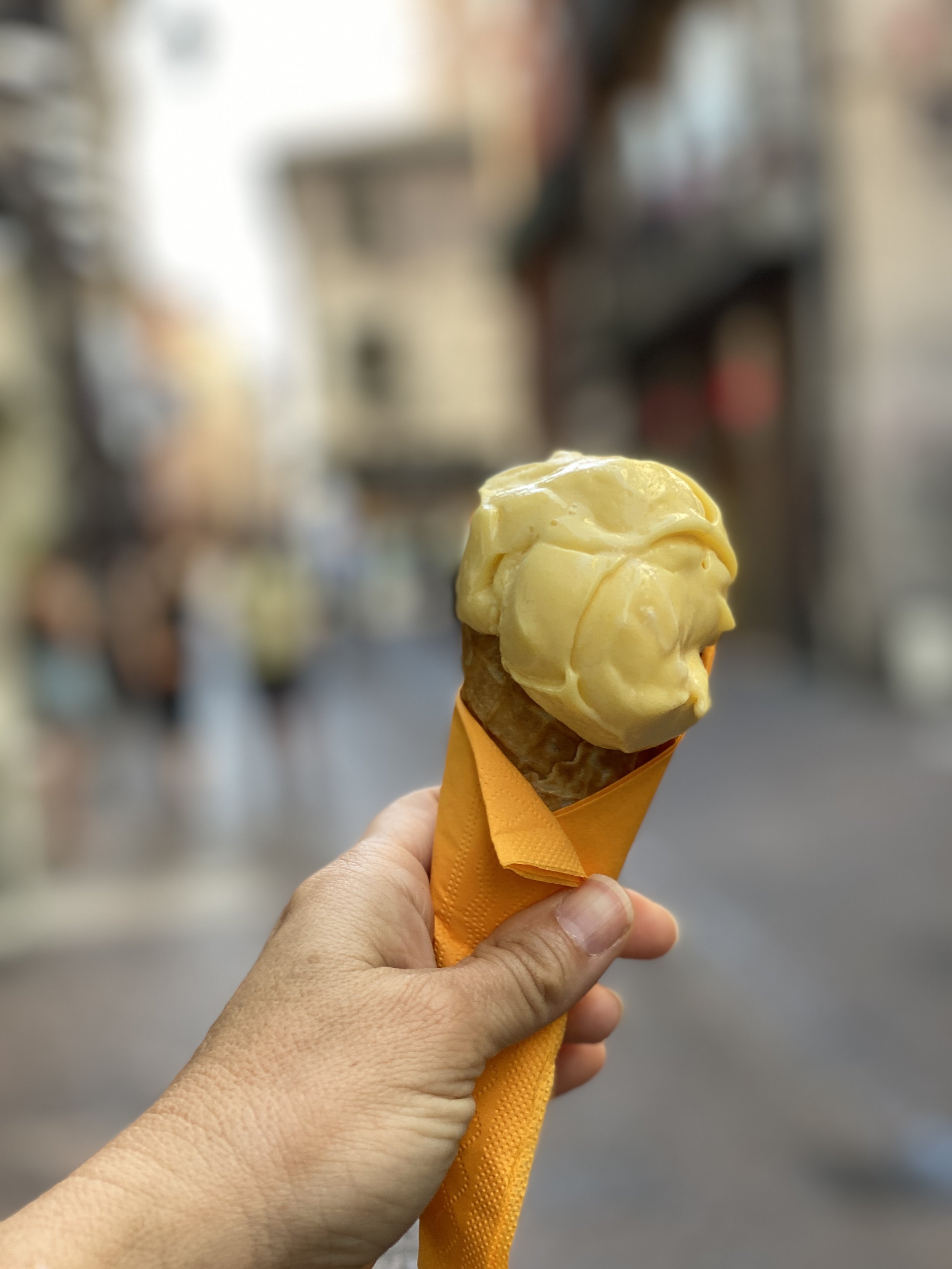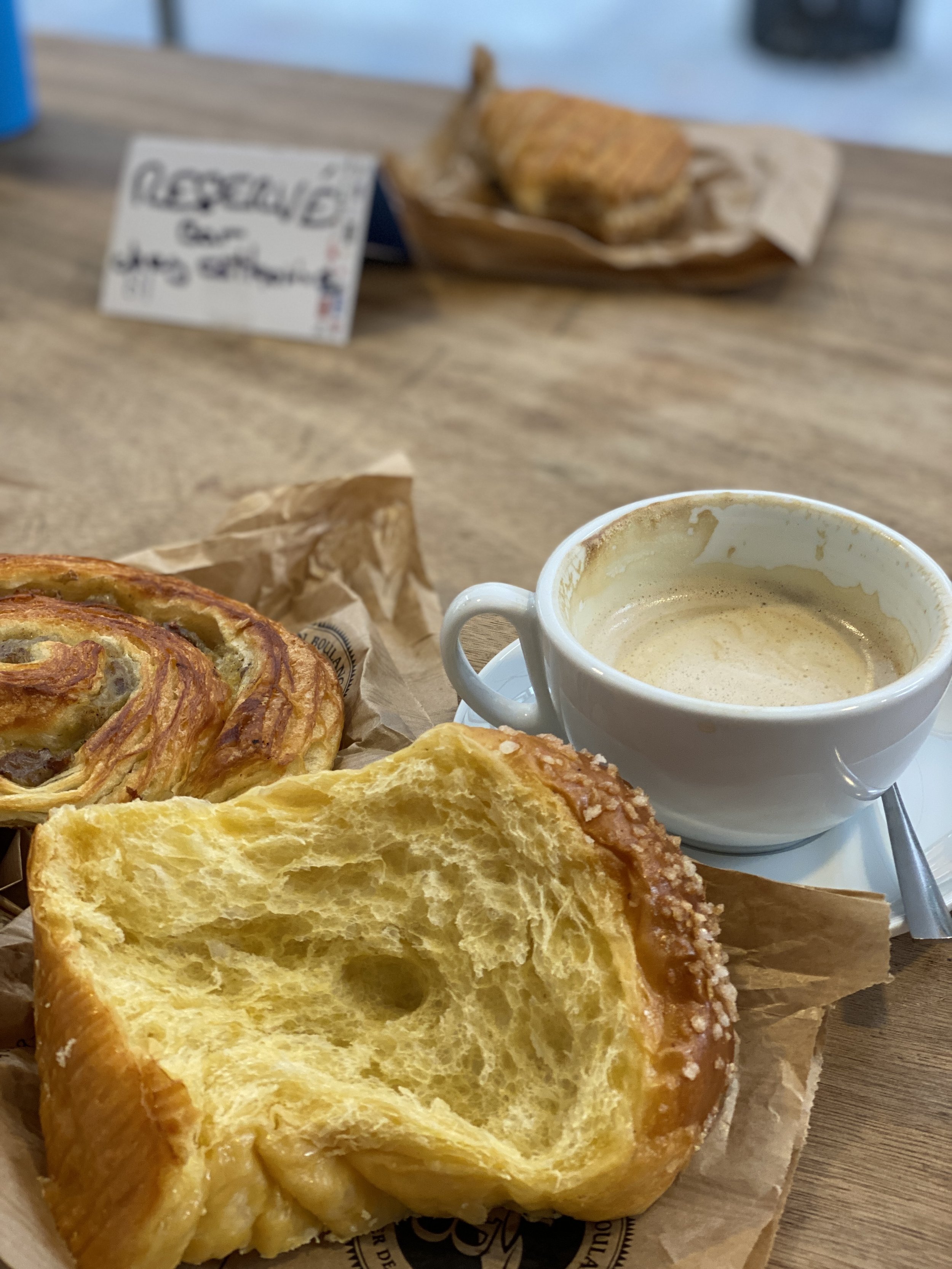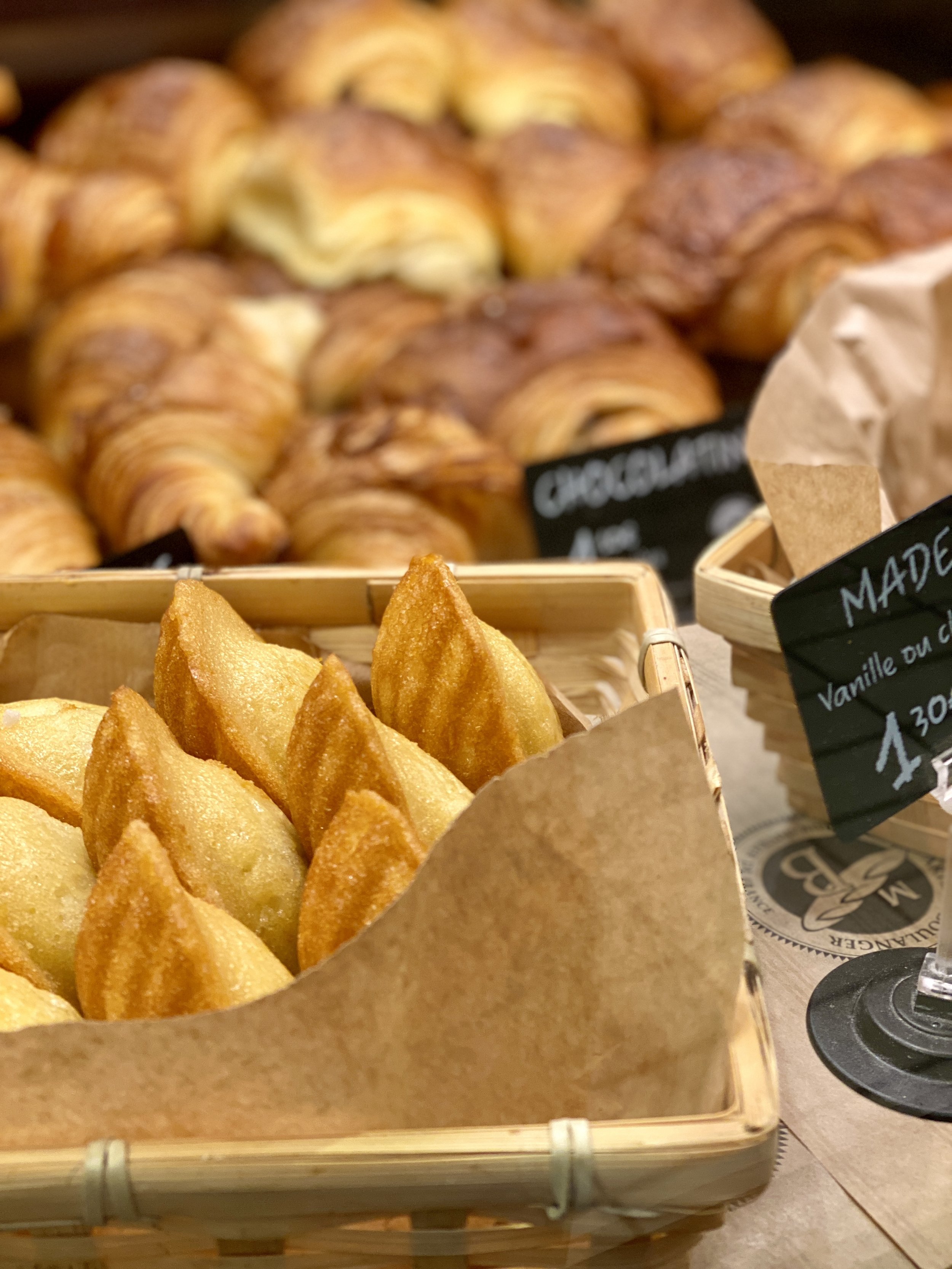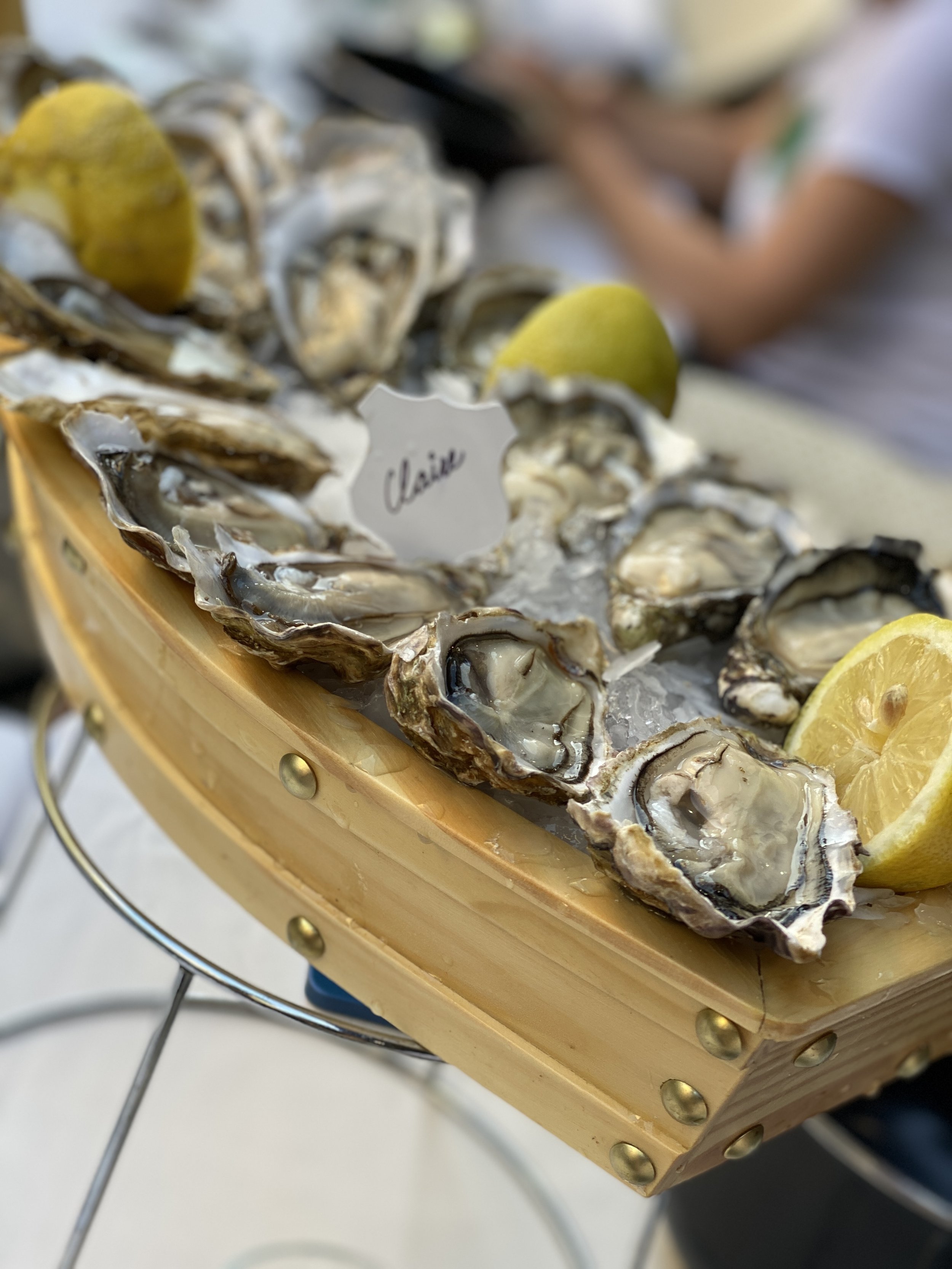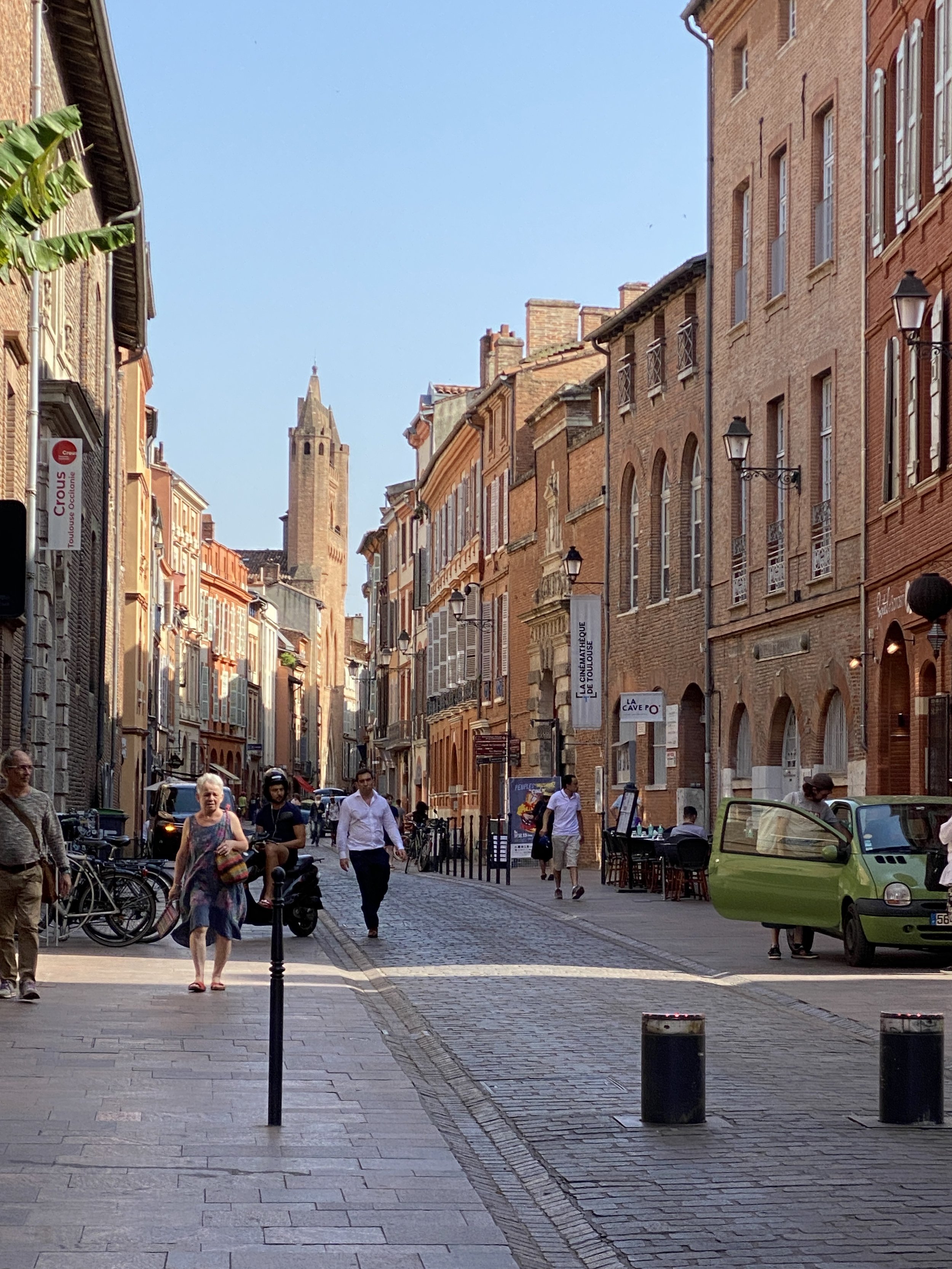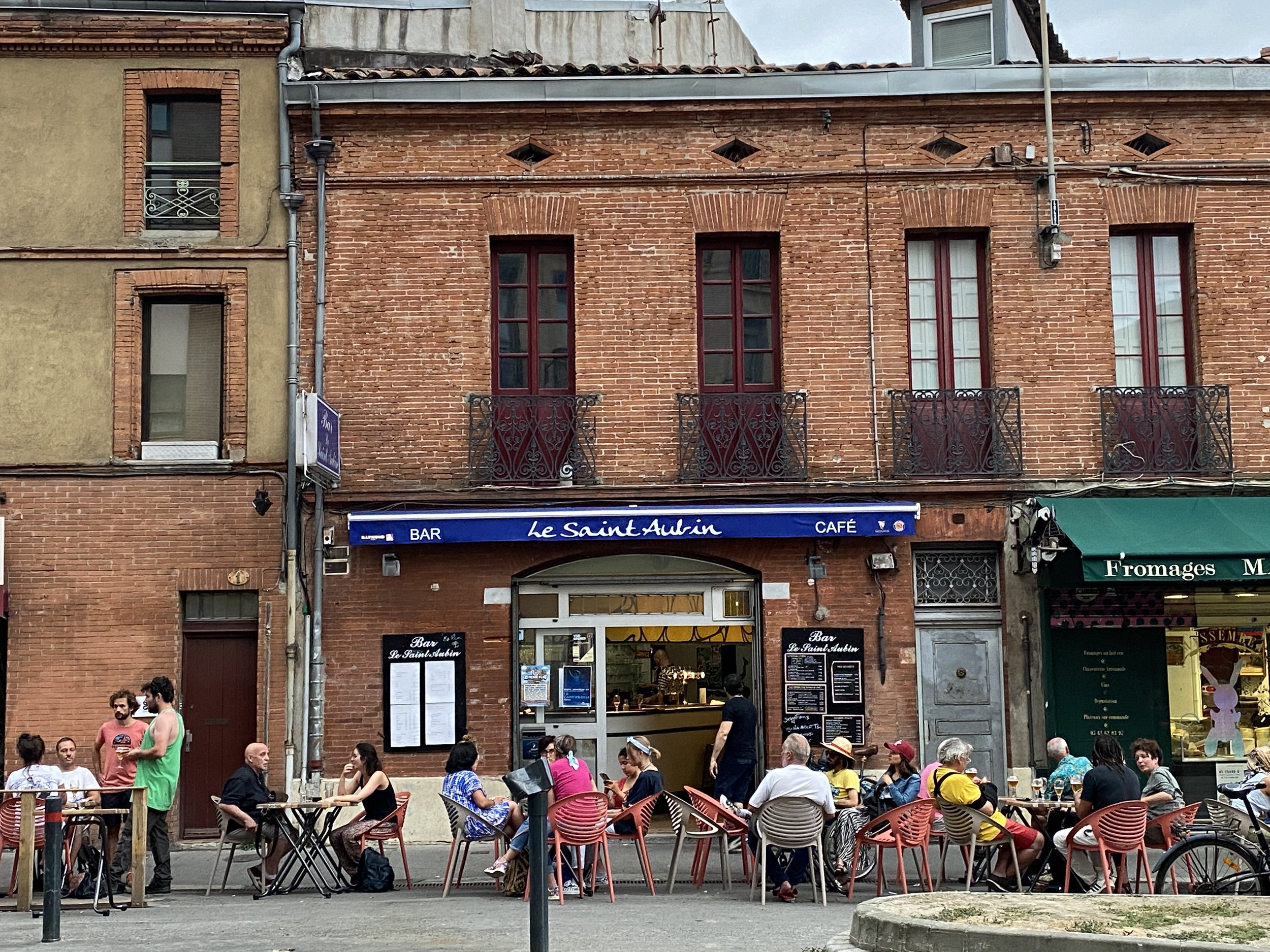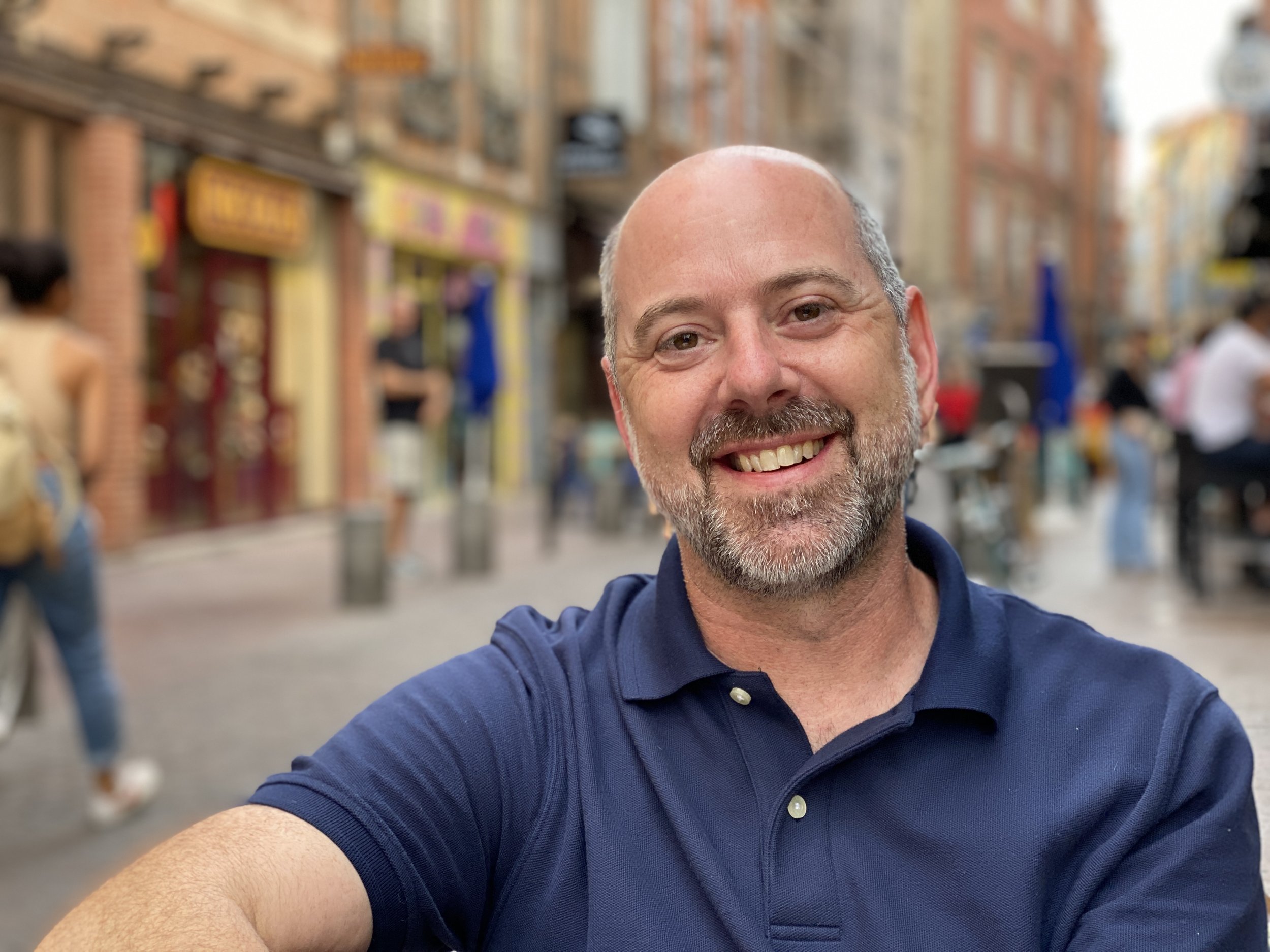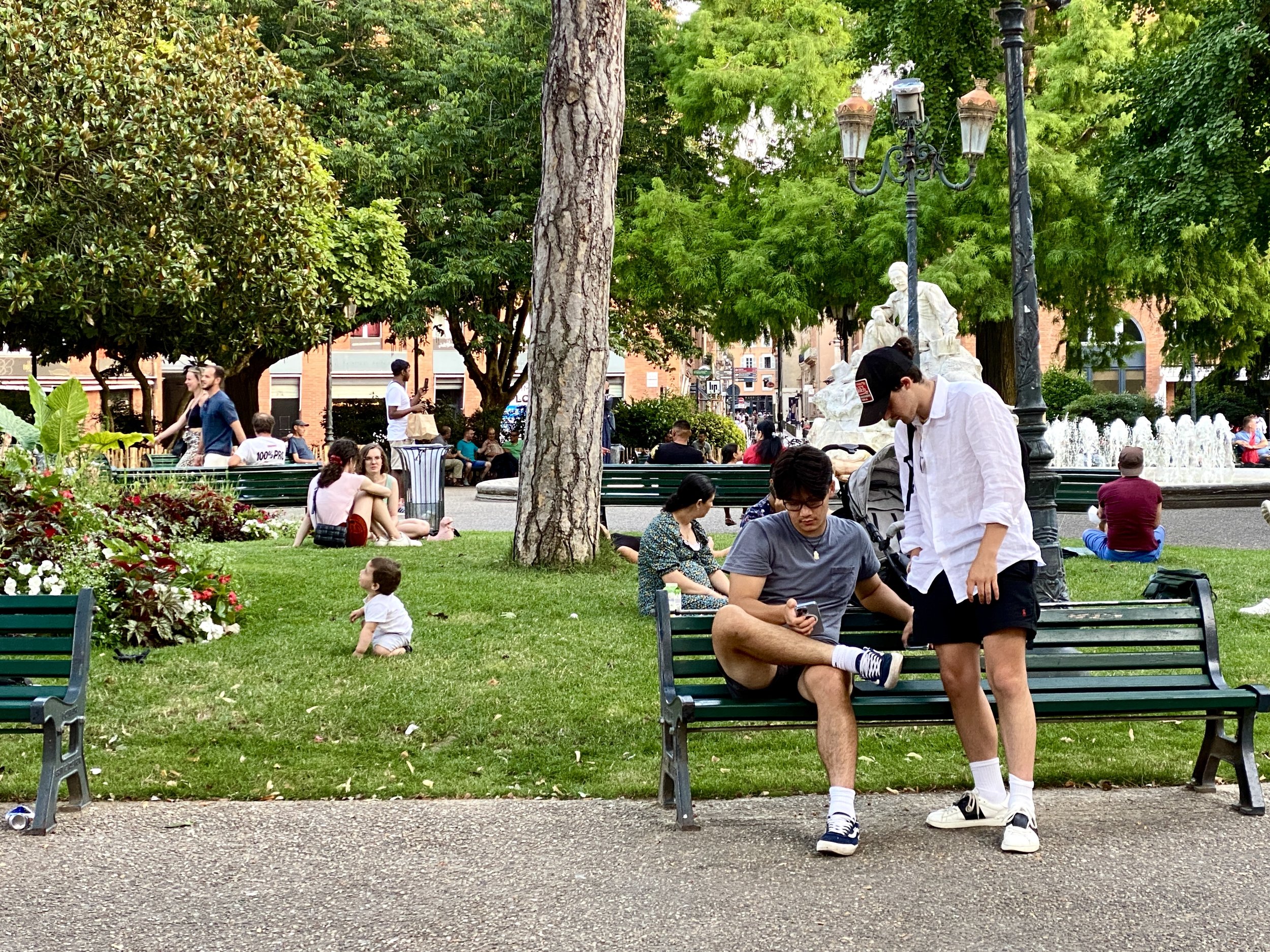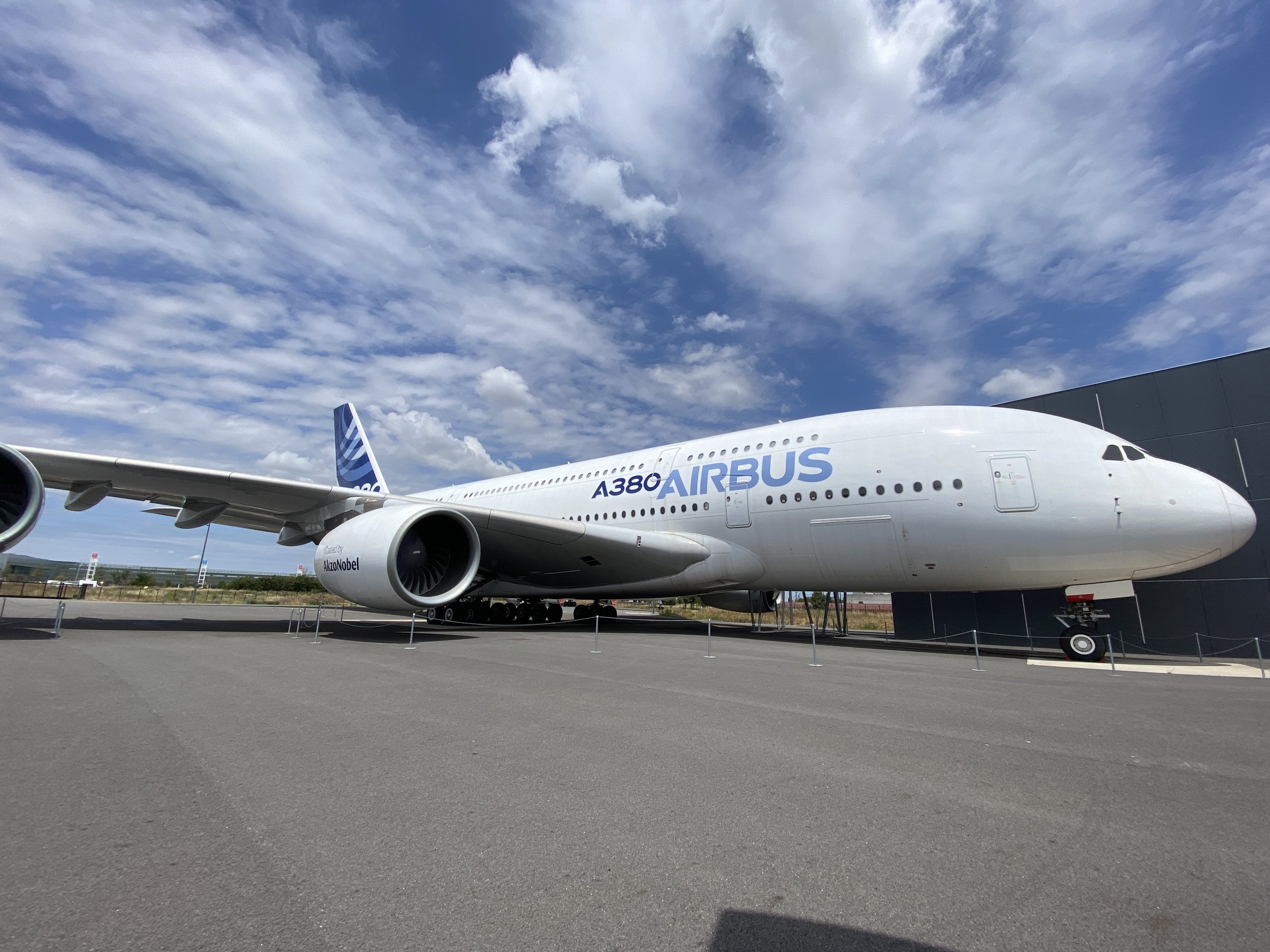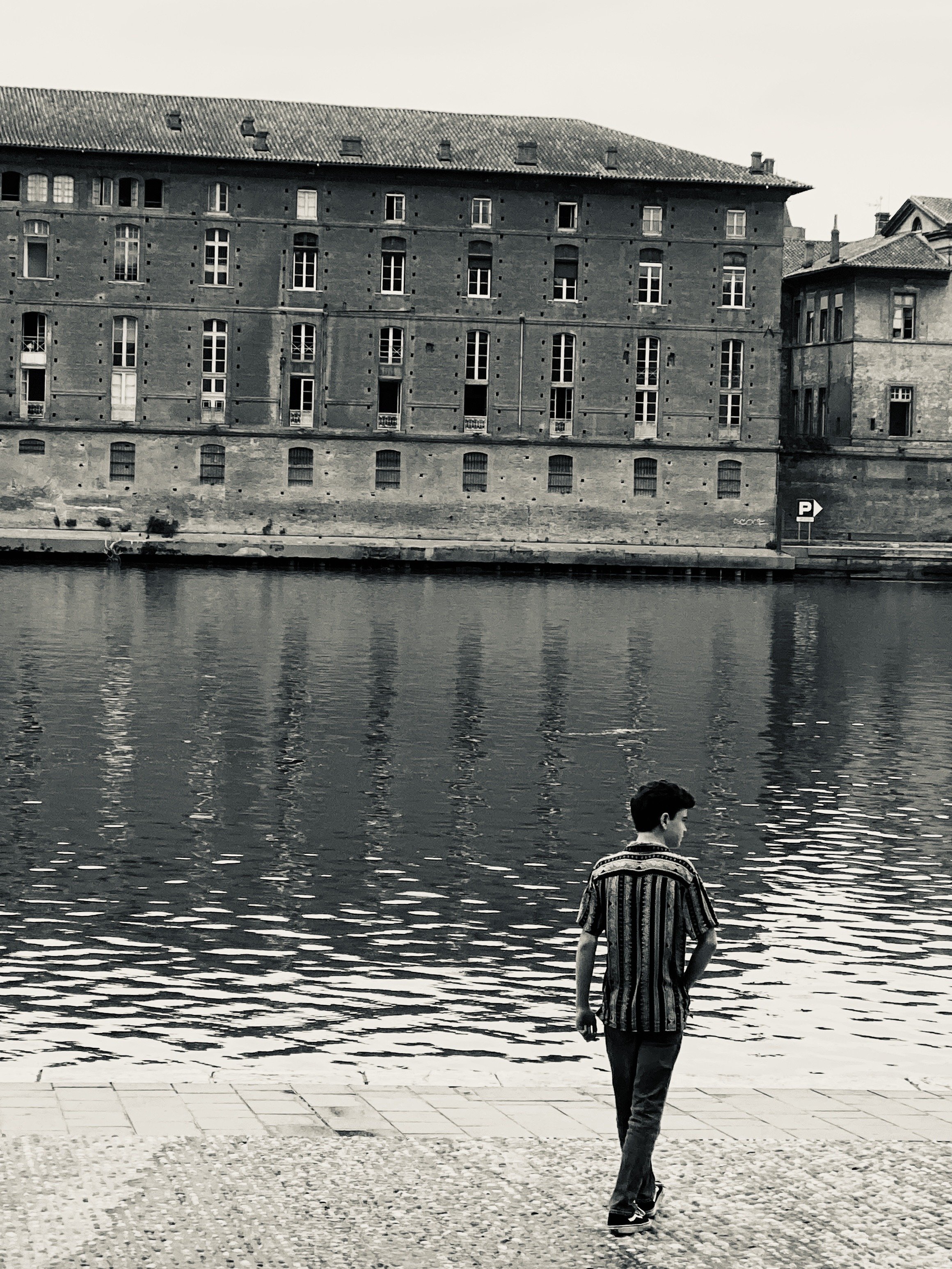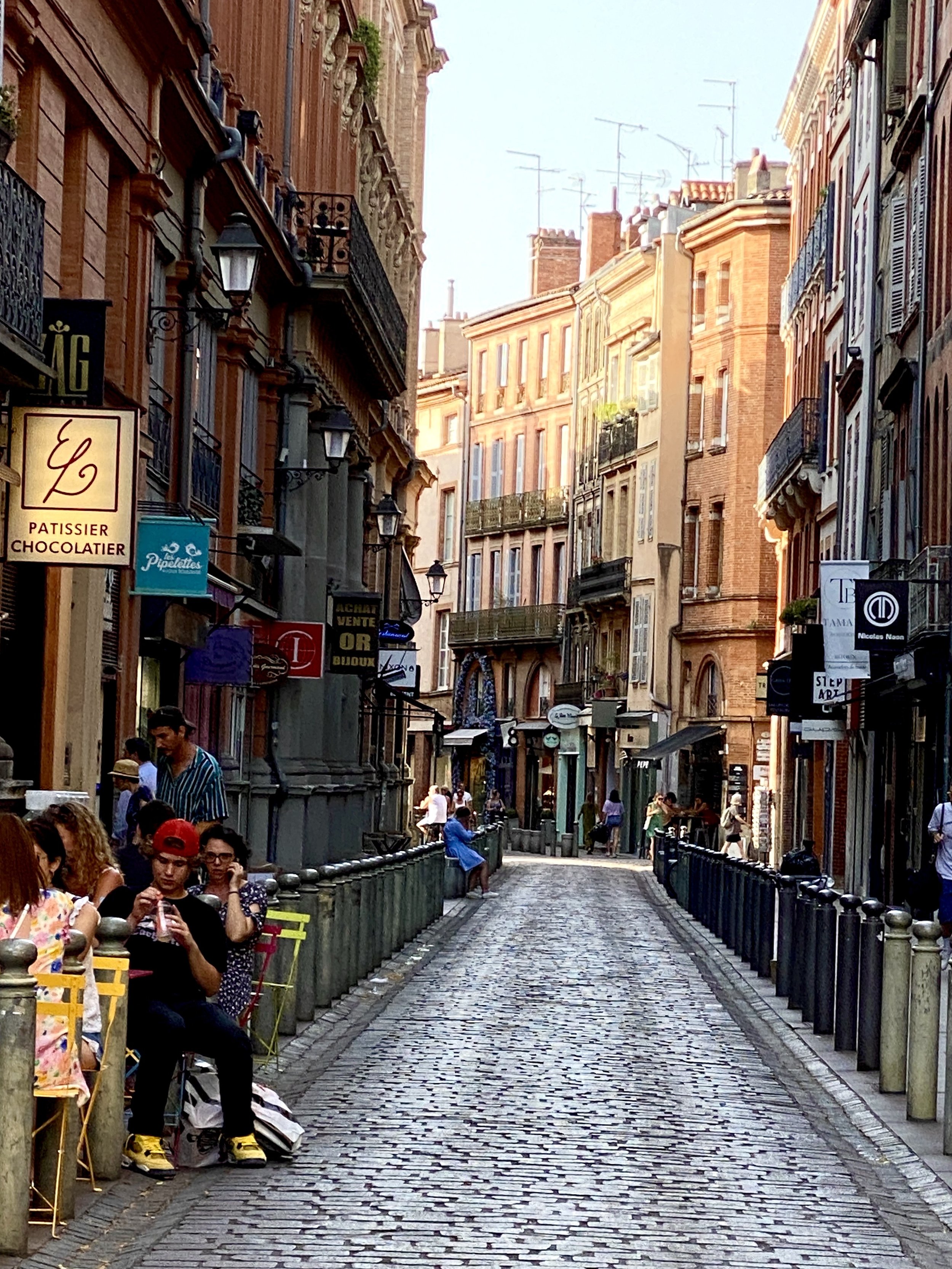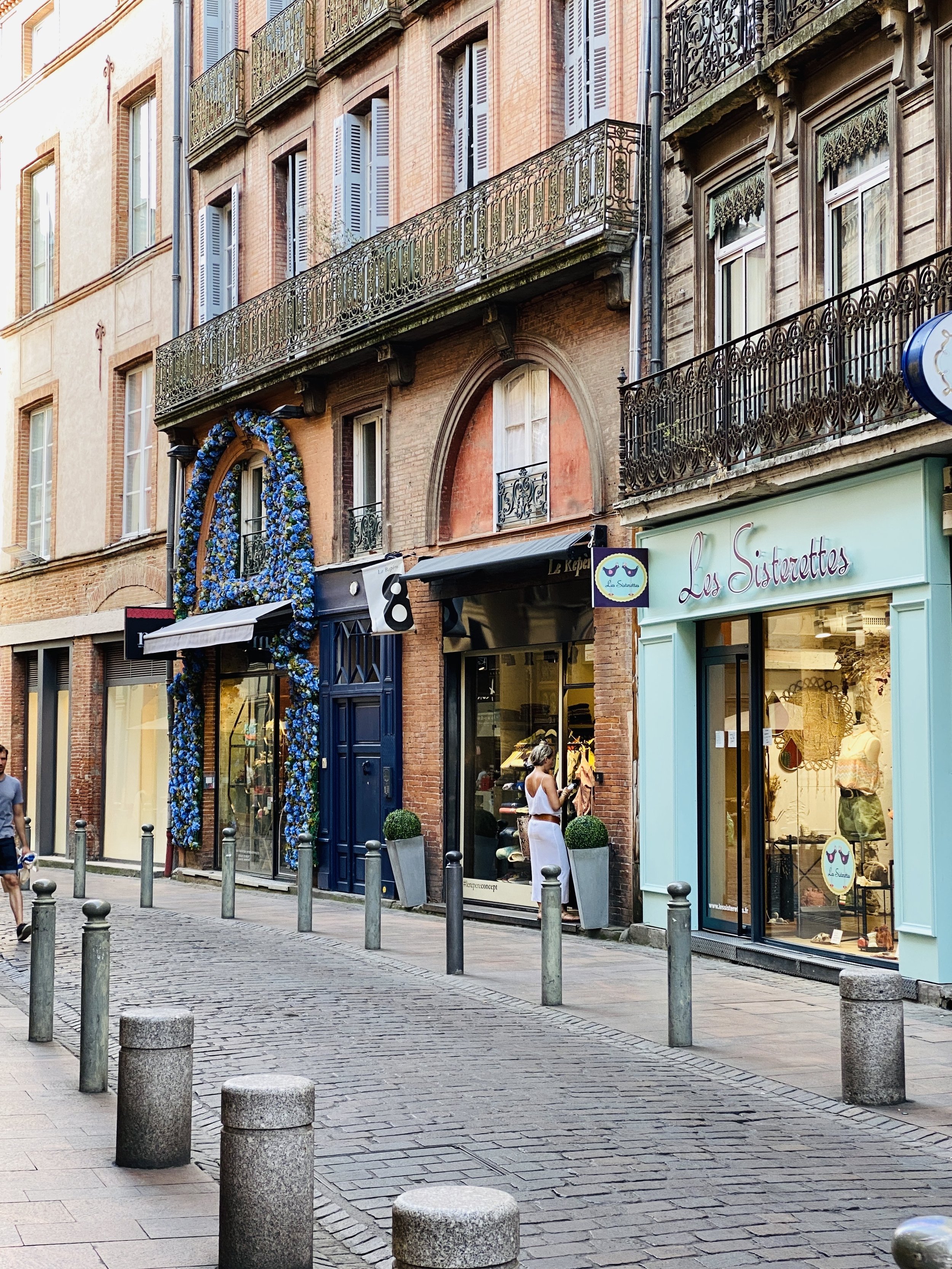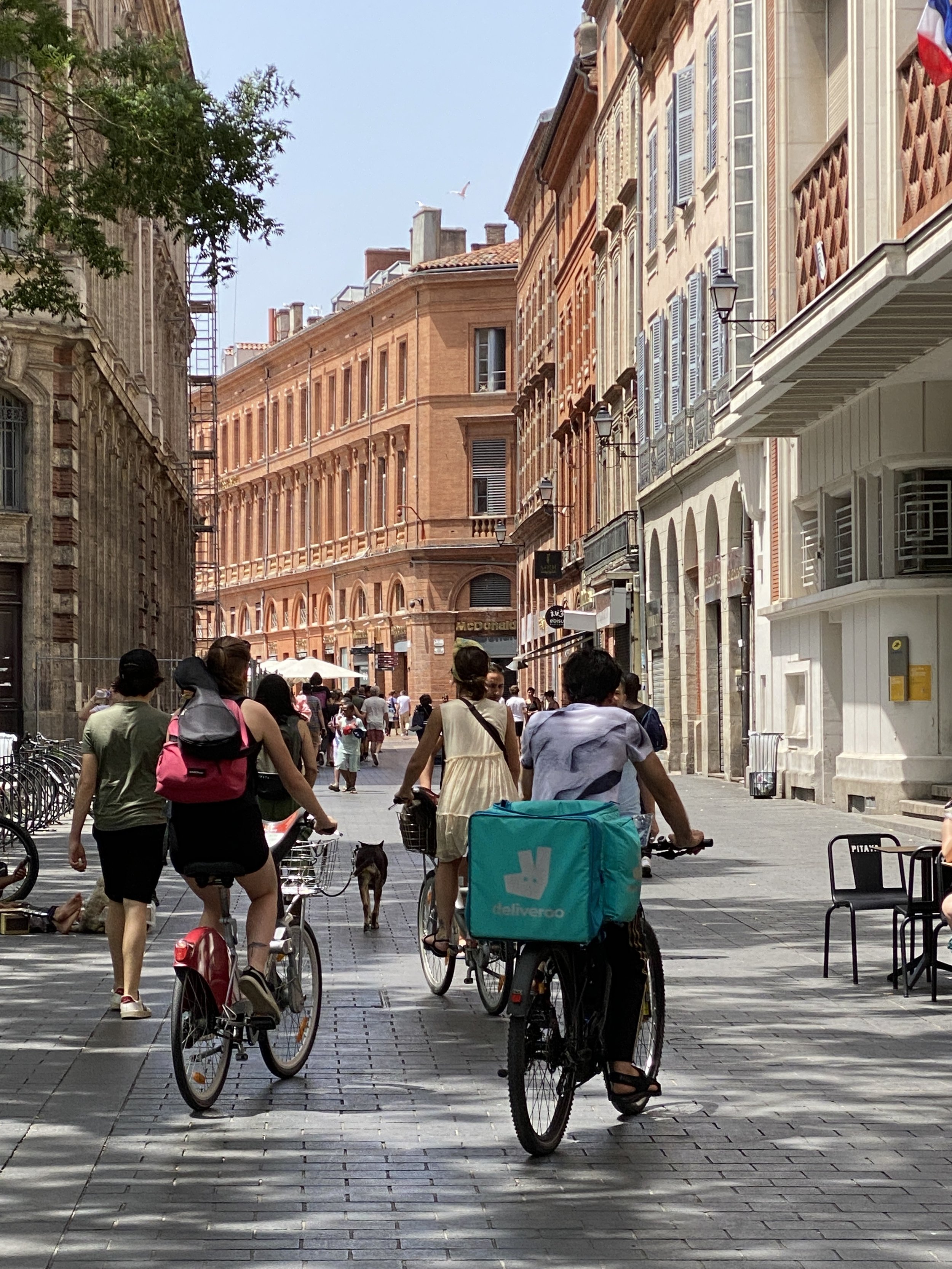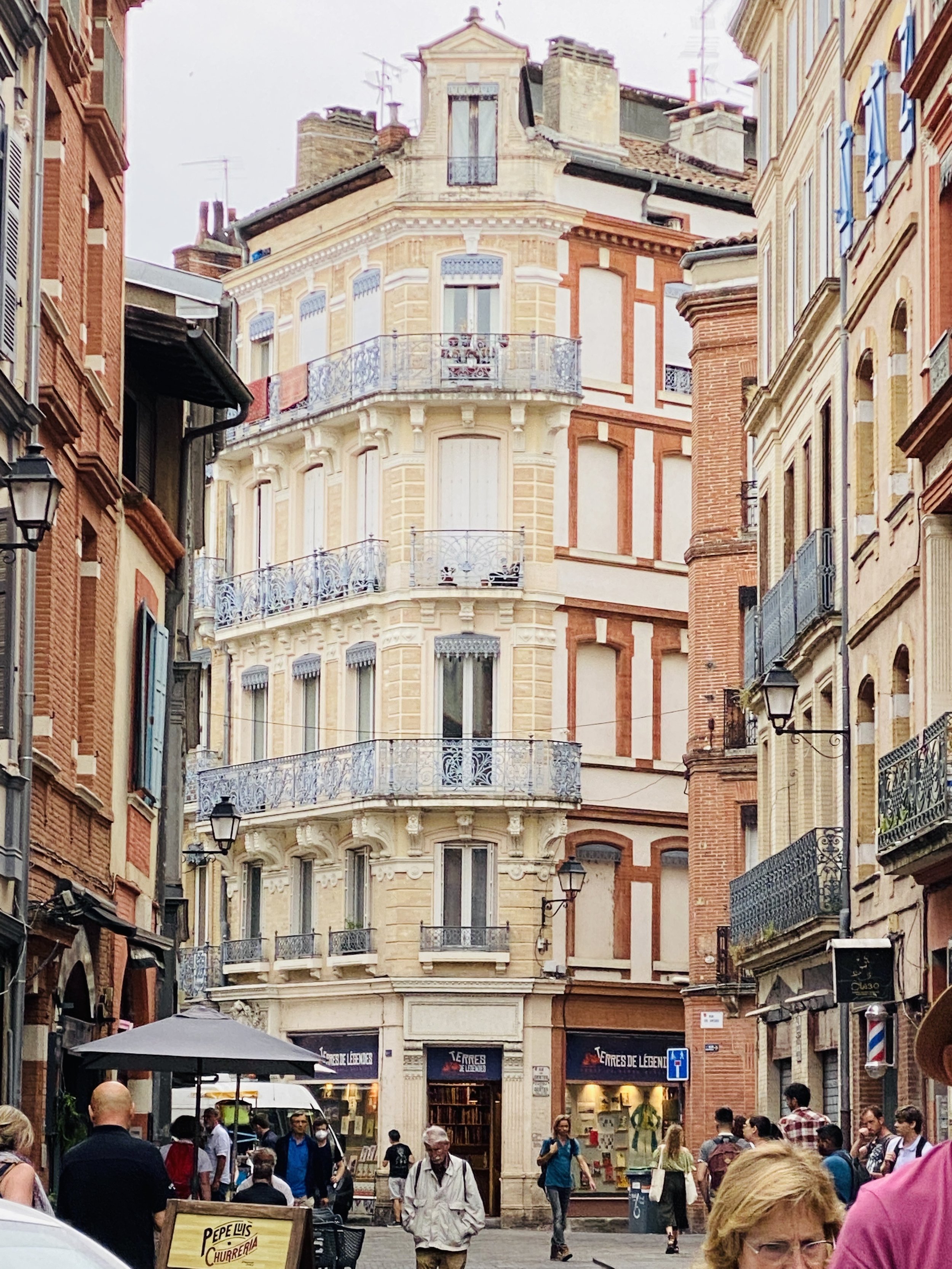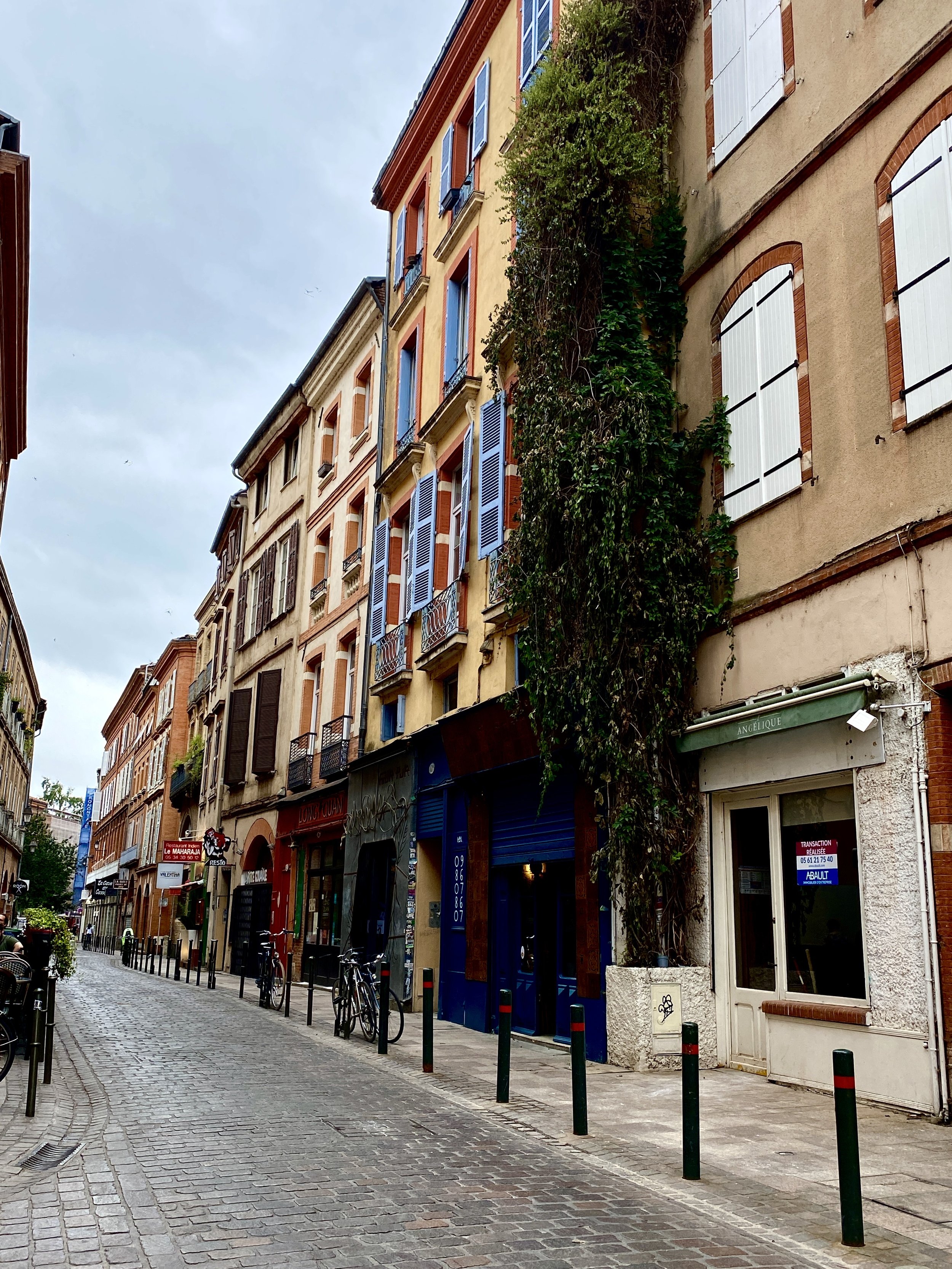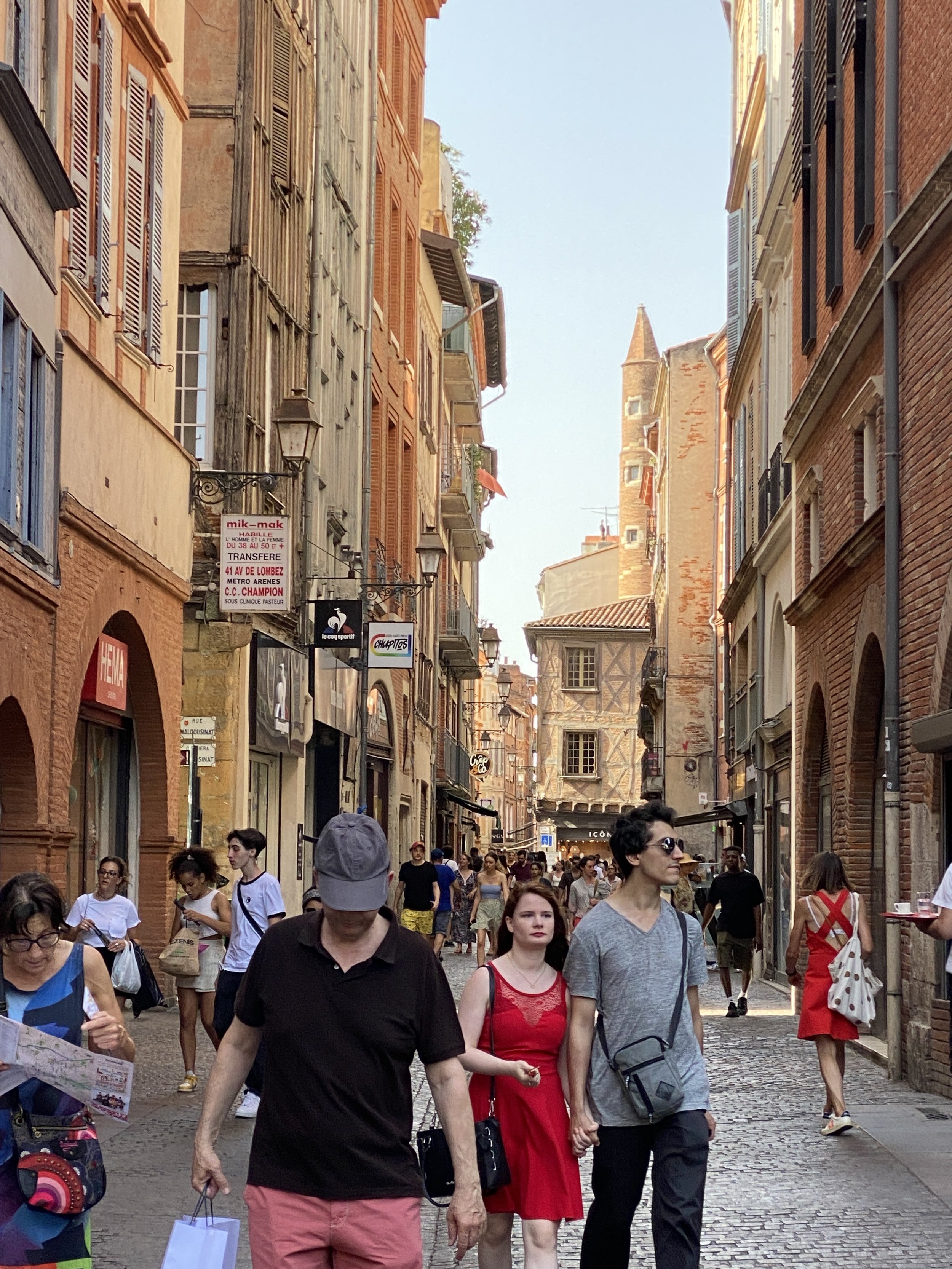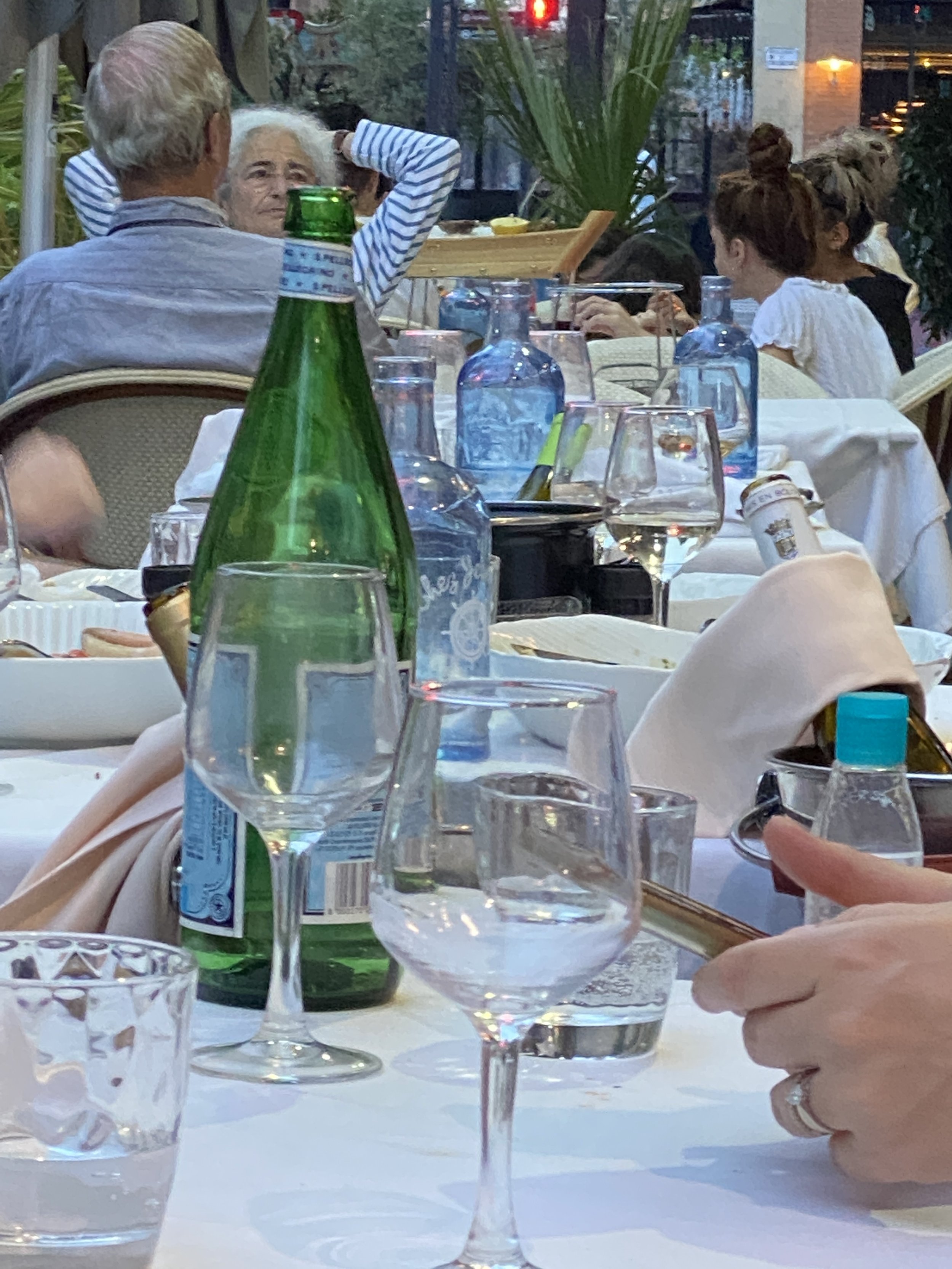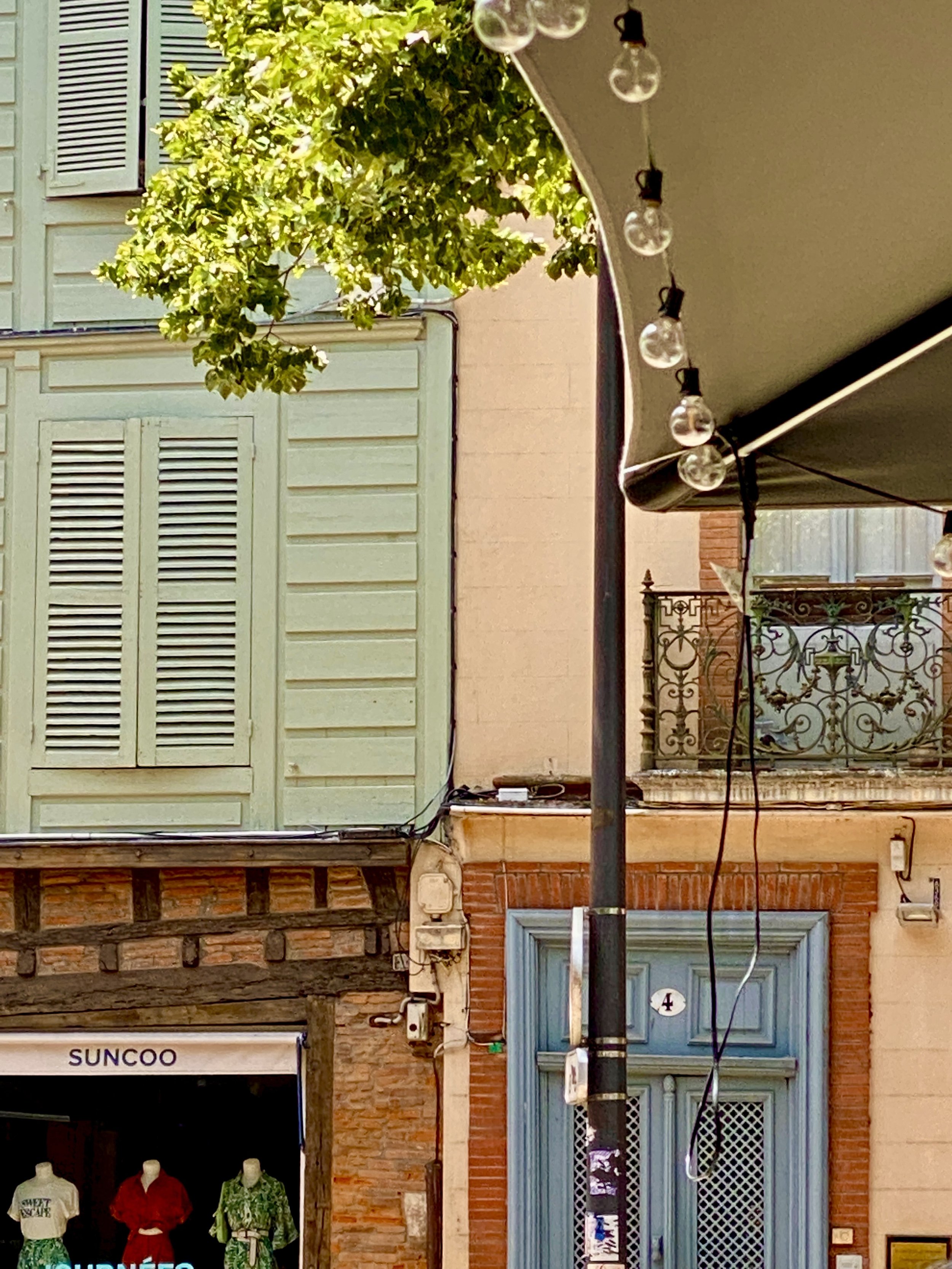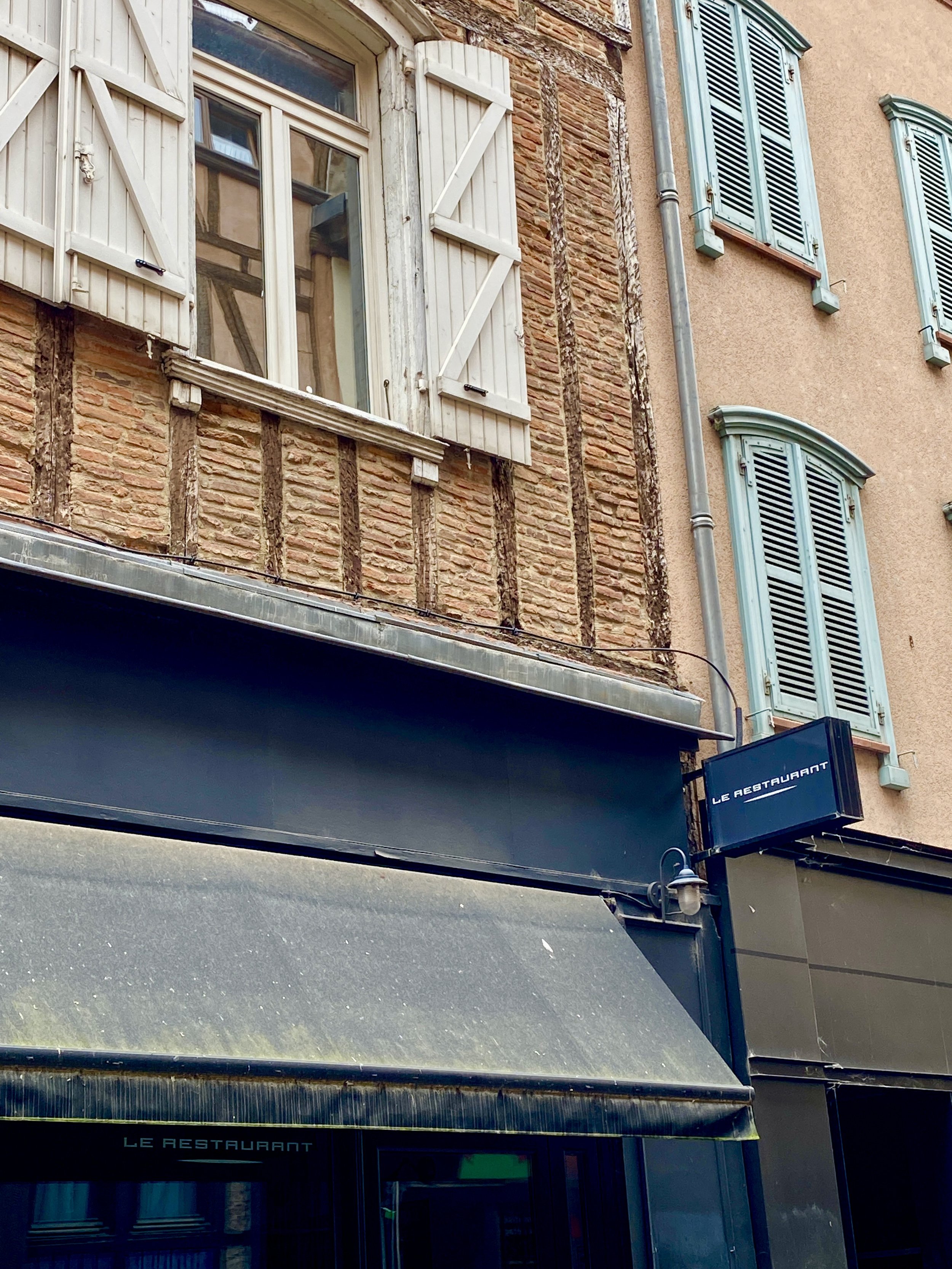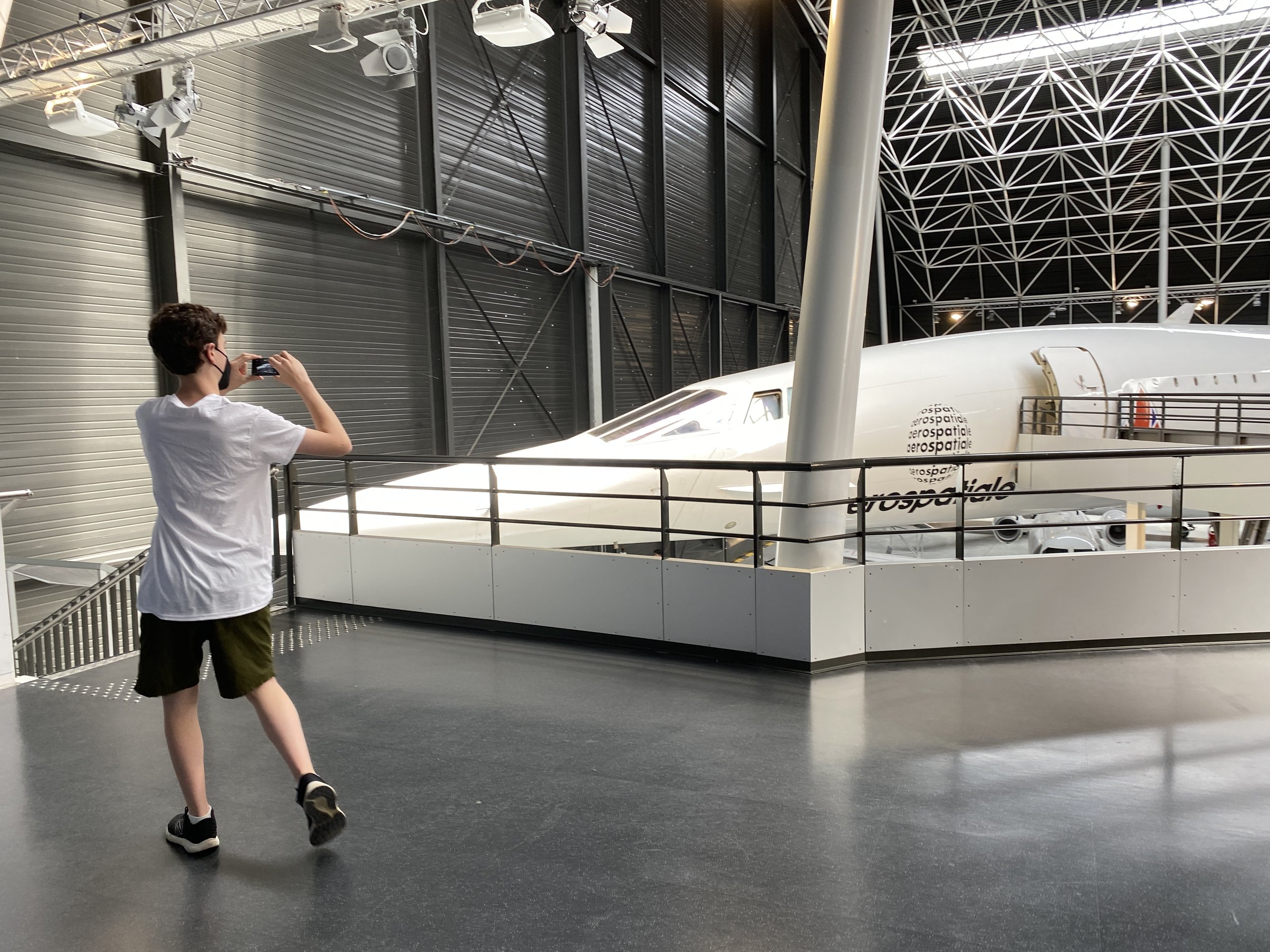To Toulouse!
/When I tell people I followed up my week of painting in the Pyrenees with a stay in Toulouse, they inevitably cock their heads and ask, “Where is Toulouse?” or, if they already know it’s a small city in southwest France, “Why Toulouse?”
I wish I had a good answer. It may very well be because of my stay in the Montmartre district of Paris last year, where I dove headlong into the bohemian spirit of turn of the century Paris, as depicted in art (primarily of the poster variety) by Toulouse-Lautrec. Toulouse-Lautrec captured the theatrical, wild, and decadent spirit of post-impressionist Paris and I fell in love with all of it.
So maybe the name stuck in a corner of my brain, surrounding the word Toulouse with a barely-contained fabulousness.
Or it could be because Toulouse was once the capital of Languedoc, a former region of France (now part of Occitanie) that always seemed a bit mysterious to me. Something about its history—the ties to ancient Rome and the fact that many still speak a language, Oc, once common across southern France—gives the region an air of a different country altogether.
Honestly, if I’m honest, I think the reason I wanted to go there is that I know so little about it. We needed to contain our summer travels to places in striking distance of Pau, where I attended the botanical art workshop, and in dragging my finger across the map, Toulouse seemed to pulse in a welcoming way, as did the Basque region of Spain we traveled to afterwards. Which makes me wonder about my pull to places where they speak languages—Oc and Basque—relatively unknown to the rest of the world.
Whatever it was that prompted me, it only took a few minutes of research into Toulouse to decide that I definitely wanted to spend at least a few days there. Here’s why:
First, it’s short on sights: a few churches, a couple of under-the-radar museums. It’s not flashy. Therefore…
It’s relatively untouristed (as evidenced by the fact that almost nobody I’ve spoken to about my trip has heard of it). Which means…
It’s a bustling small city of French people living their French lives without worrying about how to attract customers. The more I travel, the more this matters to me. I bristle at the desperation emanating from crowds of people intent on gramming the same moment. I’m allergic to shops overflowing with cheap souvenirs, and I don’t like people making food they think will appeal to tourists with tastebuds dulled by McDonald’s. In fact, I feel so strongly, I wrote up a whole article about undiscovered gems in Italy to help people discover the heartbeat of communities that are not oriented around bringing in, housing, feeding, and releasing hordes of tourists.
Also, it’s an unusual French city in that it’s constructed mostly of bricks, collected from mud along the river that bisects the city. Some of these bricks come from the city’s ancient Roman days, though most were stacked during the medieval period. All that brick has earned Toulouse the moniker of “La Ville Rose.” There’s plenty of debate about whether the color teeters into orange territory, rather than pink, but anyway it sounded pretty.
Finally, the city is Airbus’s hub. If you have known me for more than a few minutes you’ll know this fact is categorically boring to me. I couldn’t care less about airplanes other than they get me from one interesting place to another interesting place. But you’ll also know how much I love my children and enjoy supporting their passions. It’s why we rented a little studio for Siena when we lived in Italy during the pandemic, so she could have a place to paint. It’s why we take Nicolas to thrift stores so he can hunt for vintage cocktail implements to create his elixirs (okay, we benefit from this one…the art, too, as it happens). It’s why we rented an accordion for Gabe when I’m not totally sure it won’t create a racket that runs me out of the house. In any case, Gabe has been obsessed with airplanes since he was a baby. His first self-selected Halloween costume? A pilot. Not just any pilot. A Concorde pilot. He insisted his nametag include this critical piece of information. How he could identify a Concorde at age four, I have no idea, but he did. I have a self-portrait he made at age five…the typical youngster self-portrait with wide eyes and a deranged, toothy, smile, though Gabe couldn’t help but include a plane above his head, attached by thought bubbles coming out of not one, but both temples, as if to underscore the fact that planes consumed his entire brain.
It’s not gotten better, this plane fever. After we returned from Europe this summer, he attended a pre-college session at Brown University expressly because they offered a fluid dynamics course taught at his level (he’d been bemoaning that he’d need vector calculus before getting into fluid dynamics, so finding one taught without that requirement thrilled him….can I add again, he very well may have been switched at birth. But I’m keeping him). In any case, when I mentioned Toulouse to Gabe, he told me that Airbus was headquartered in Toulouse, making it Europe’s air and space capital. This is one of many, many aviation facts lodged in my child’s brain. Anyway, I looked it up, and he was right, there’s an entire museum dedicated to documenting the rise of commercial aircrafts, with a bit of a pitch towards Airbus. Anyway, I figured after a week doing my thing in the Pyrenees, the least I could do was let my plane-addled child spend some time in the motherland.
Oh, wait, I forgot to mention food. Of course. Toulouse is known for some pretty classical French favorites: duck everything (duck confit as well as magret, duck breast), cassoulet, Foie gras, violet, truffles… well, that was enough for me.
That spot of research, a few instagram rambles though pretty streets, I felt like I knew what we were walking into.
Boy, was I wrong.
I should have ramped up every expectation, and then I could have gotten close.
Tourists? Almost zero.
When was the last time you went to France and saw almost no tourists? Astounding. Now, I’ve spent time humoring people who like to land what they think is a clever, “gotcha!” moment by reminding me that I’m a tourist. So let me address this upfront: I don’t have a problem with tourism. Obviously not! I love being a tourist and I love for people to travel and see new things, expand their minds. I encourage tourism. I just don’t like it when everyone goes to the same tired destinations. Because then, a city begins to orbit around tourism and it changes the character of a place.
Toulouse is as Toulouse was. And what that meant for this trip was that people were friendly and patient with our poor French skills. Most places did not have someone around to speak English (I heard more Oc spoken than English…at least I think it was Oc), which meant that we had the fun of trying. In fact, we sometimes walked into a restaurant and greeted the waitstaff in French that was passable enough that they launched into French and we had to quickly disabuse them, oh, no, we can’t hang with conversational French. Everyone would laugh and we’d move on, us still speaking French, and them nodding along, their faces intent with concentration. We went to one restaurant with a wine pairing and since nobody around spoke English, we got to hear the spiels about each wine in French. We only caught some of it, obviously, but enough to make us appreciate each sip and also to feel so lucky to be surrounded by French.
Food? Delicious. Fantastic. Whole wide world (as Gabe used to say when something particularly pleased him).
We enjoyed aperitif in this plaçe and that. In Toulouse you can get the French favorite, kir, which is usually made from champagne and creme de cassis (black currant) , with violet instead. I even got a violet spritz!
We had seafood and steak frites and a cassoulet that finally made me understand what all the fuss was about. We had pastries and ice cream and all kinds of tasty treats.
There are probably fancier places to eat in Paris, or at least more of them, but honestly, while I enjoy a tweezered meal once in awhile (stay tuned for the Michelin starred meal in Bilbao that rocked my world) I mostly enjoy accessible food that is full of tradition and heart.
Check and check.
Life? Magnificent.
I woke up the first morning in Toulouse with a pang, realizing it was the day of Spello’s Infiorata. The first in three years! So imagine my delight and surprise to come upon a Corpus Domini procession through the streets of Toulouse. My breath caught as I watched French children drop flowers from their baskets while pre-teen boys drifted incense in front of the priest who walked in the center, holding a monstrance (a vessel that holds the host, the star of the celebration), as parishioners dressed in their Sunday best walked alongside them, lifting their voices in song. I felt nothing but gratitude to be able to witness this special moment in the life of a community.
As the music drifted ahead, we turned to find a stunning plaçe, the French version of a piazza, or city square. Toulouse is famous for its wealth of such “squares” and I love hearing people debate which is their favorite, especially as this varies by time of day. Perhaps a quite plaçe alongside a cathedral for the contemplative morning hours and a bustling plaçe in the afternoon for a cocktail while people watching. Each plaçe carries a sense of the moment, of holding the space, and I loved them all.
We stayed on one of the main plaçes, and it was brimming with humanity. All the time. Every day. Once with a market, once with a festival of languages (booths for so many languages, with entertainment of music and dancing!), and children running through a spray park and people stopping to talk with bags of groceries over their shoulders. The last night I was grateful for our lodging’s modern windows as bands caroused through the space until the early hours of the morning.
What I didn’t expect about Toulouse was the beauty of the architecture. The bricks really did emit a kind of ethereal glow, but more than that, I adored all the half-timbered buildings and variety of styles. Each street felt like a revelation. We did a lot of stopping to gesture and inventing destinations to have a reason to discover new streetscapes.
This was made all the easier because Toulouse is a remarkably walkable city. Much of the center is closed to traffic and the buildings are dense, making it easy to swan down this charming street, around that enchanting corner. Two of the days we walked to gardens in the outskirts of the historic center (a botanical garden with all kinds of fancy poultry marching around, and a Japanese garden), and each time it took less than a half hour, even with our stopping to gawk. A third day we walked along the canal, mostly because I’m a sucker for a canal. And we had one wonderful morning strolling along the river.
Though Toulouse doesn’t boast the kind of Louvre-like museums that draw in a crowd, there are plenty of places to duck into for a spell to have your mind broadened until it crackles. Unfortunately, thanks to the pandemic and some architectural overhauls, we were only able to visit a handful of sites.
But some I’d like to visit when we come back are:
Musée des Abattoirs: A modern art museum in a former slaughterhouse.
Fondation Bemberg: A former private art collection (one of the largest such private collections in Europe) housed in a Renaissance-era hotel. I had wanted to see the post-impressionist paintings as well as the Venetian paintings.
Muséum de Toulouse: A natural history museum.
Musée Georges Labit: An archaelogical museum within a former Moorish villa set along the canal that runs through Toulouse (and, along with a couple of other canals, connects the Atlantic ocean to the Mediterranean). The museum exhibits object from Egypt and the far East and also offers a garden space.
Château d'Eau: A photography gallery within a nineteenth century water tower. Founded in 1974 by a photographer from Toulouse, it is one of the oldest public photography exhibits.
Musée du Vieux Toulouse: This is one we were super disappointed to find closed. It’s a history museum housed in a Renaissance building and its goal is to illustrate the history of Toulouse from antiquity to today. Ever since I read A Street Through Time, I’ve been a little obsessed with imagining the same place through various epochs.
Musée Paul Dupuy: A museum exhibiting objects of a collector, housed in a 17th century mansion. It’s most famous for its clock collection, but I wanted to see the advertising posters. Must be another Toulouse-Lautrec holdover.
Halle de la Machine: This museum sounds like something a toddler would make up, and I mean that in the best way. The museum is filled with contraptions, from animatronic mythical beasts, notably a Minotaur that you can ride as it strides around, to a quirky carousel, to disembodied wings that take to the air.
We did go to Musée Saint-Raymond and enjoyed getting a sense of Toulouse in the historical landscape, as well as their special exhibit on Mithras. I first heard of Mithras during our first trip to Rome when my middle child still napped in a stroller and my baby wasn’t even an idea. On that trip, we descended into the layers of Basilica San Clemente, though the medieval church that stands today, to the older church (from the 300’s) that the “modern” church was built on top of, down to a temple dedicated to Mithras, which is on top of the lowest level, a Roman mansion that was used for clandestine Christian worship. It’s worth seeking out if you’re in Rome, but anyway, that was my first introduction to Mithras, an Iranian god absorbed into Roman worship. The god and religion stuck with me all these years, and I loved learning more about it in Toulouse. I want to read historical fiction about ancient followers of Mithras, but an Amazon search only turned up the same French books mentioned in the exhibit (which aren’t translated into English), so if you know of any books in English (originally or translated), let me know? I’d love to learn more about Mithras through the medium of storytelling.
While in Toulouse, we stepped into a cathedral or two, including the Basilica of Saint Sernin, which has the honor of being the only remaining Romanesque basilica in Europe. It’s design is slightly unusual since it is a stop on the Camino de Santiago pilgrimage route and as such needed to be able to welcome in and shuttle out a lot of people. We had the great good luck to rest our feet for a bit in the quiet, airy church and discovered we were just in time for a procession, complete with organ and choir.
Obviously, we made sure to visit Aeroscopia during our stay, Toulouse’s museum of commercial flight. It’s conveniently located next to the airport (which, by the way, is located on the metro-line that goes into the city—we really didn’t need to rent a car, though I’m unsure how far Aeroscopia is from the airport stop). Gabe was over the moon to be surrounded by all these aircraft that he could actually walk into. He even, in a moment flush with whimsy, took a video as he stepped into the Concorde, the very plane he’d pretended to pilot for Halloween all those years ago.
For the non-plane-obsessed, such as myself, I can tell you I actually found myself enjoying it. There was just enough context in the museum for me to gain an appreciation for how commercial aviation came to be part of our every day life. Another fun part was the flight simulator. Our gift to Gabe years ago was a flight simulator program, which he adores, and we got to see the fruits of his labors when he easily took off and landed and seemed to know what the squiggly numbers meant.
Now, if you’ll be coming to Toulouse, I’d definitely check out the Join us in France podcast. I learned so much about what to notice and appreciate in the city. The hosts of the podcast live in Toulouse (one was born there, and one is from the States but has lived in Toulouse for years and is a tour guide with a bounty of interesting historical tidbits). The podcast covers many French destinations, so I definitely would give a listen if you’re visiting anyplace in France, but it’s particularly rich for Toulouse and its environs. I also love their aggregate episodes like Napoleon’s route through France, how to over come typical French snags in your travels, enjoying France on a student budget, and finding the best of Christmas in France.
Our days in Toulouse captured much of what I love best about travel. Having my senses open to new experiences. Letting days unfold. Being open to wonder. Cleaving our hearts to a new pin on our map of the world. Though I’ll fondly remember the food and the museums and the church and the planes, the part I’ll carry close to my heart is this one casual moment:
We visited Toulouse’s famed covered market one morning and bought all kinds of supplies for a picnic lunch (fois gras and baguettes and radishes and fruit and cheese and butter and salami) on our rooftop deck, since I wanted to have the wine I had brought from the Pyrnenees (Jurançon Sec is a revelation—it may be the first white wine I felt worthy of my time!). While at the market, we bought pastries (an otherworldly brioche, soft and nuanced and speckled with crunchy sugar) and discovered, to our pleasure, we could eat our breakfast at tables set up outside the market, that were part of the cafe, which was just a bar, manned by one guy in blue glasses. Before we discovered the outdoor tables, we enjoyed just standing at the bar, listening to the regulars chat with Blue Glasses. Once we went outside, we found the table next to us filled with old men speaking Oc. We cheerfully eavesdropped, catching not one word, but delighting in the tones of a fading language.
The next day, we went back to the market to pick up breakfast before we headed off to Aeroscopia and then Bilboa. We stepped at the bar and Blue Glasses’ eyes lit up behind his lenses. He nodded along to our order, as if he could anticipate our standard coffee preferences, and after he served us, he hesitated, walked away, then came back.
In soft tones, Blue Glasses asked where we were from. We told him and he nodded with a smile and said the day before he hadn’t been able to tell if we were English or American, but today he’d caught some of what we’d said to each other and he figured we were probably American.
We chatted for a few moments and I realized I wanted to stay.
Stay here, in this rose-colored city, where life unfolding is the most ordinary, and the most extraordinary, thing that can happen.
Have you been to Toulouse, or anywhere in the former Languedoc region? Would you like to visit? Share your thoughts in the comment section below! If you want to make sure you don’t miss updates to the blog and travel sections of this website, sign up for the Grapevine—you’ll get fresh content once a month and I’ll even send you a free novella set in Italy as a thank you!
